Vol. 70, No. 15 (2021)
2021-08-05
INVITED REVIEW
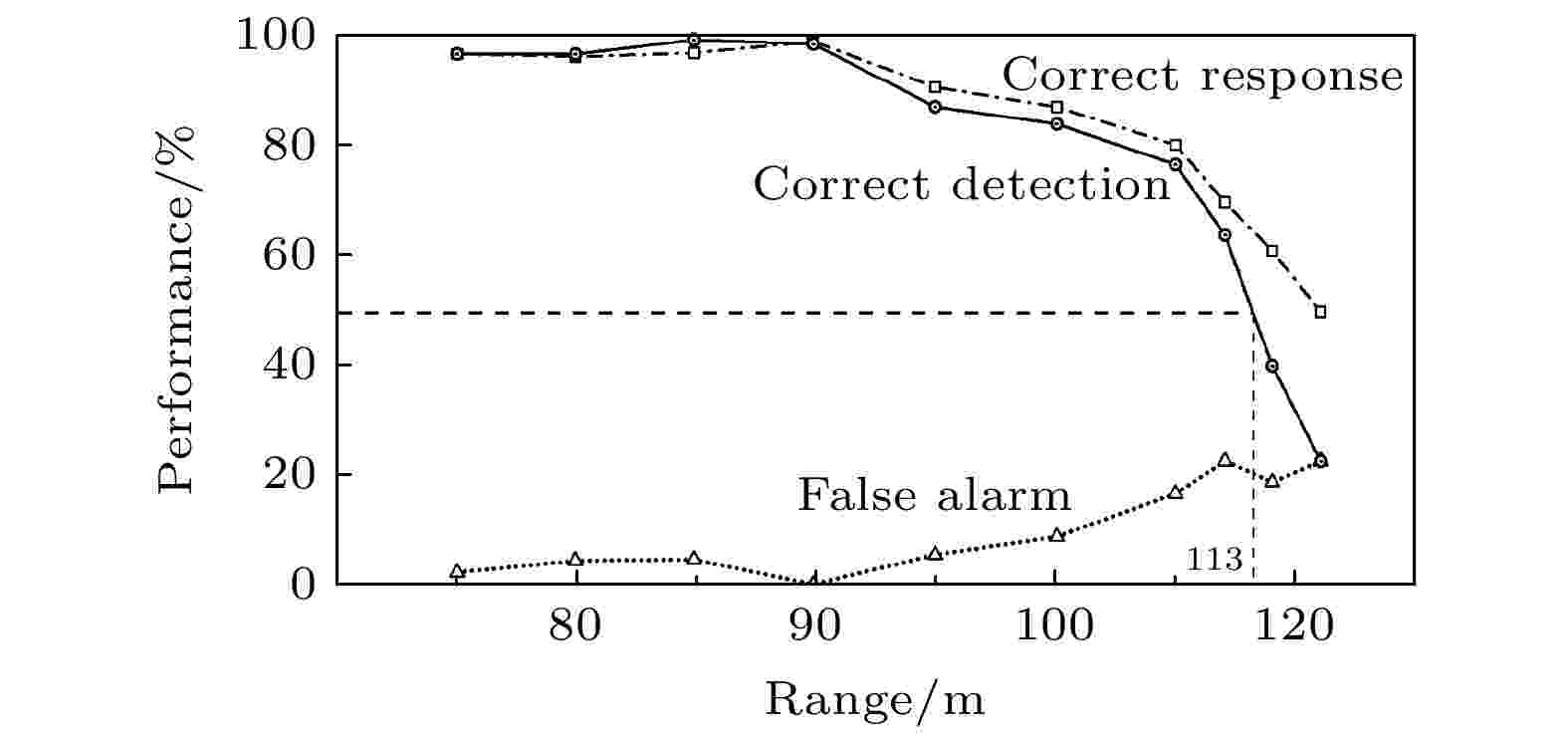
INVITED REVIEW
2021, 70 (15): 154302.
doi: 10.7498/aps.70.20210284
Abstract +
Odontocetes have evolved to own a unique natural sonar system to detect targets. Odontocetes use their sound emission systems in their foreheads to produce echolocation clicking targets. Echoes contain information about the size, material and ranges of the targets. Odontocetes can probe into the echoes in both time domain and frequency domain to realize the target discrimination. More studies are necessary to reveal how odontcoetes collect meaningful information from echoes. In this paper, the target detection by odontocetes is reviewed from three aspects, i.e. detection range, target discrimination and biomimetic target detection system. Odontocetes can actively adjust their biosonar systems to realize optimal detection. Numerical simulation and bioinspired systems can help to shed light on physical mechanism of odontocetes’ target detection process. Multiple theories are needed to deepen our understanding of target detection by odontocetes, which can provide references for designing intelligent biomimetic signal processors.
REVIEW

EDITOR'S SUGGESTION
2021, 70 (15): 157301.
doi: 10.7498/aps.70.20210065
Abstract +
With the rapid development of the information age, the demand for information storage capacity and miniaturization of memory units has been being increased. However, the commonly used silicon-based flash memory has nearly approached to its physical limit. The resistive switching random access memory (ReRAM) has become one of the promising candidates for the next-generation non-volatile memory due to its simple structure, fast operation speed, excellent flexibility, and long endurance. Recently, we witnessed that the lead halide perovskites, as hot star materials, have been widely used in optoelectronic fields owning to their advantages of low cost, excellent photoelectric properties, and solution process ability. Moreover, the lead halide perovskite has been successfully used as the active layer in ReRAM device because of its tunable bandgap, long charge carrier diffusion length, fast ion migration, and high charge carrier mobility. Whereas the toxicity of lead in halide perovskite is a very horrible problem in lead halide perovskite-based ReRAM devices. The lead-free halide perovskite is considered to be the most promising material for perovskite-based ReRAM devices because it does not contain lead element. Most recently, a large number of scientists from different groups have begun to study lead-free perovskite-based ReRAM devices. For example, tin, bismuth, antimony, and copper-based halide perovskite materials have been utilized in ReRAM devices and exhibited excellent resistance switching (RS) performances. Here in this paper, the recent development of lead-free perovskite and its RS performance are reviewed, including lead-free halide perovskite materials, RS performances, and RS mechanisms of lead-free perovskite-based ReRAM. Finally, the key problems and development prospects of lead-free perovskite-based ReRAM are also presented, which provides a fundamental step towards developing the RS performance based on lead-free halide perovskites.

2021, 70 (15): 157501.
doi: 10.7498/aps.70.20210097
Abstract +
Hole-doped perovskite-type manganites have received intensive attention due to their intriguing physical phenomena such as giant magnetocaloric effect and magnetic-phase transitions. However, the mechanism of internal ferromagnetic interaction still needs to be further explored due to the complex natures of competing double-exchange (DE) and super-exchange (SE) interaction, Jahn-Teller (JT) polaron localization, charge ordering, and phase separation scenarios. Critical exponent analysis near magnetic phase transition is a powerful tool to investigate the details of the ferromagnetic interactions and has been used frequently in various magnetocaloric materials. In this article, the critical behavior analyses of perovskite manganites in recent years are comprehensively reviewed. A large number of studies have shown that even in single-phase materials with uniform structure and composition, the critical behavior can be affected by multiple factors such as grain boundary density and the degree of disorder, making them difficult to fully describe the intrinsic ferromagnetism. In this review, firstly, the critical behaviors of typical manganites with different bandwidths in single crystal and polycrystalline are discussed. In a double-exchange dominated system such as La-Sr-Mn-O, short-range 3D-Heisenberg model is basically in good accordance with optimally-doped single crystal sample. However, it would be replaced by long-range mean-field critical behavior in polycrystalline sample when the correlation length exceeds the crystallite size. In a typical intermediate bandwidth system such as La-Ca-Mn-O exhibiting a complex phase diagram described by competing SE/DE interactions, JT polaron localization/delocalization, and Griffith phase disorder, the critical exponent can vary from 3D-Heisenberg model to tricritical mean-field model, for the crossover from first to second order phase transition. Secondly, the studies of elements doping and different fabrication methods indicate that the critical behavior of manganites can be effectively modulated, and vary between different theoretical models including even nonuniversal exponent for highly disordered magnetic system. In the following part, the influence of magnetic field on the critical behavior and field induced crossover phenomena of La-Ca-Mn-O system near tricritical point is analyzed and discussed in detail. Furthermore, the magnetocaloric effects of materials near the tricritical point collected in many studies are listed and compared with each other. Excellent magnetocaloric properties with high magnetic entropy change and relative cooling power in plenty of researches indicate that ideal magnetocaloric material would be very likely to be found in the materials near the tricritical point, which lay at the borderline between first-order and second-order phase transition. Consequently, it is suggested that perovskite manganites are still quite promising in the potential magnetic refrigeration applications, and need to be further developed.
GENERAL

EDITOR'S SUGGESTION
2021, 70 (15): 150201.
doi: 10.7498/aps.70.20210411
Abstract +
In the era of big data, efficient data processing is crucial. Quantum computing has the capability of parallel computing, which provides a new solution for convenient data processing. We propose a matrix low-rank approximate quantum algorithm based on singular value decomposition with a complexity of $O[{\rm{poly}}(p q)]$ . We conduct the principle demonstration of the algorithm in the NMR quantum computing system. In the experiment, $^{13}{\rm C}$ labeled cromaric acid is used as a four-bit sample, dissolved in d6-acetone, and $^1 {\rm H }$ is decoupled in the whole process. In the case of a large number of bits, quantum principal component analysis, quantum recommendation algorithm, and other quantum algorithms can achieve the same goal, and their time complexities are basically the same. In this paper, the resonance transition algorithm is used to effectively replace the phase estimation algorithm in this kind of problem, which greatly reduces the need of auxiliary bits. Only one auxiliary bit is used and a singular value is retained to better restore the image, which is currently unable to be achieved by other algorithms based on phase estimation. Firstly, an $8\times8$ -dimensional image matrix is selected, and the pseudo-pure state is prepared by using the spatial averaging method. The quantum state reaches the target state by using gradient descent pulse to complete the preparation of the initial state. Then the shape pulse is used to apply the time-evolution operator to the initial state several times to realize the time evolution of the Hamiltonian $ \mathcal{H} $ of the resonance transition algorithm. Finally, the quantum state chromatography is used to read out the different components of the density matrix and reconstruct the density matrix. The experimental results are analyzed by quantum state chromatography, and the experimental values are in agreement with the theoretical ones. The fidelity is 99.84%, and the error comes mainly from the experimental equipment and the gradient pulse’s optimization algorithm. This verifies the correctness of the matrix low-rank approximate quantum algorithm proposed in this paper within the error range. For the classical algorithm, it usually takes $O[{\rm{poly}}(p q)]$ to solve the low-rank matrix on the classical computer. Compared with the classical algorithm, the quantum algorithm achieves exponential acceleration.

2021, 70 (15): 150701.
doi: 10.7498/aps.70.20210151
Abstract +
In this paper we present a miniaturized pre-calibration based forward-viewing Lissajous scanning fiber probe for endoscopic optical coherence tomography (OCT). The probe is based on an asymmetric fiber cantilever driven by the piezoelectric bender to realize the two-dimensional (2D) Lissajous scanning, which can realize a relatively large scanning range under a low driving voltage. A capillary metal tube is mounted at the end of the main fiber to reduce the resonant frequency of the fiber cantilever. The relationship between the filling rate and the side-lobe number of the Lissajous scanning pattern is studied, and a method of selecting the orthogonal resonant frequency of the Lissajous scanning is proposed. Through the numerical simulation by COMSOL software, the structural parameters of the asymmetric fiber cantilever are determined. The orthogonal resonant frequencies of the asymmetric fiber cantilever are 169 Hz and 122 Hz. The lengths of the main imaging fiber, the auxiliary fiber and the metal capillary tube are 15.94 mm, 4.49 mm and 2 mm, respectively. The probe is fully packaged in a metal tube for endoscopic imaging. The focal spot and the working distance are 25 µm and 5 mm, respectively. The field of view is larger than 1.5 mm × 1.5 mm. The total rigid length and the outer diameter of the probe are 35 mm and 3.5 mm, respectively. The stability and repeatability of the Lissajous scanning trajectory, and the imaging stability with the rotation of the probe are investigated and verified. The probe is incorporated into a 50 kHz swept source OCT system. The axial resolution of the endoscopic OCT is 10.3 μm, and the imaging frame rate is 1 FPS (frames per second). The maximum signal-to-noise ratio of the imaging system is 110 dB. The imaging performance of the probe is validated by the 2D en-face and three-dimensional volumetric OCT imaging of the high scattering sample and the biological tissue. The probe can be used for the endoscopic imaging of the human tooth. From the result we can distinguish the dental enamel, dental essence and the dental calculus. The developed forward-viewing Lissajous scanning fiber probe is expected to be used in dental applications such as early calculus detection.

2021, 70 (15): 150702.
doi: 10.7498/aps.70.20210312
Abstract +
The quantitative method of iodine monoxide radical (IO) using incoherent broadband cavity enhanced absorption spectroscopy (IBBCEAS) in the 435–465 nm band is described in this paper. In order to obtain the concentration of IO accurately, the parameters such as the mirror reflectivity, effective cavity length and sample loss of the IBBCEAS system are evaluated. Using the difference of Rayleigh scattering between nitrogen and helium, the reflectivity curve of the high-reflection mirror is obtained. The reflectivity R of the mirror at 436.1 nm of the IO absorption peak is about 0.99982, and the effective absorption optical path reaches 3.83 km under vacuum condition. According to the absorption of O4, the effective cavity length of the modified system is 60.7 cm. The Allan deviation is used to evaluate the performance of the system, and the standard deviation is used to analyze the detection sensitivity of the system. When the time resolution is 60 s, the detection sensitivity (2σ) of the system for IO and NO2 are 1.9 pptv and 20 pptv (part per trillion by volume), respectively. The iodine dissolved in potassium iodide (KI) solution is taken out by the bubbling method and react with ozone after photolysis to produce a stable concentration of IO sample gas. The IO loss in the sampling tube is calibrated, and the results show that the sampling tube has no significant effect on the IO loss. The IBBCEAS system is used to determine the linearity of IO, and the correlation coefficient R2 between the measured concentration of IO and the proportioned concentration in a concentration range from 39 to 530 pptv is 0.99. The IO produced by the reaction of iodine released from kelp with ozone is measured.
ATOMIC AND MOLECULAR PHYSICS
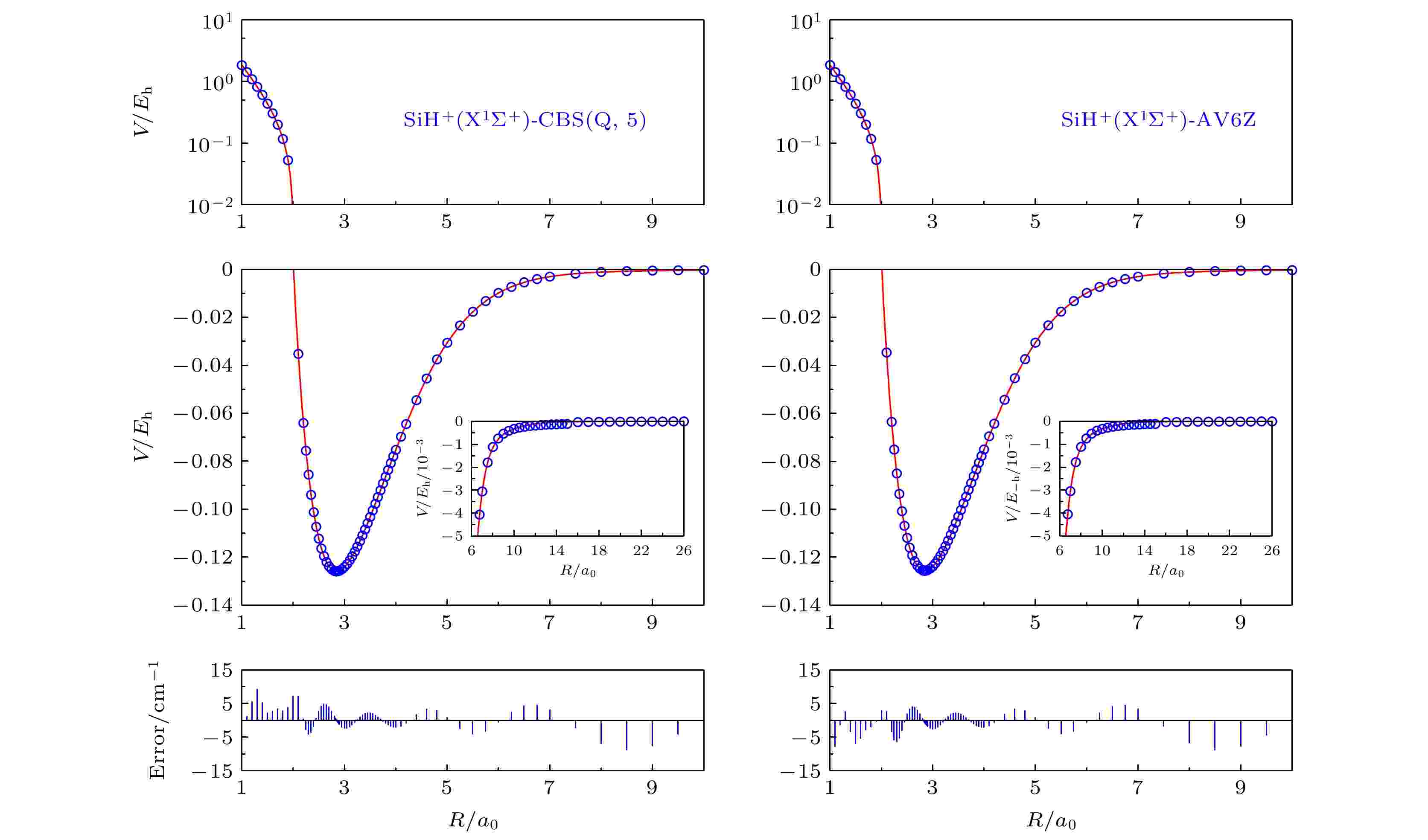
2021, 70 (15): 153301.
doi: 10.7498/aps.70.20210450
Abstract +
ELECTROMAGNETISM, OPTICS, ACOUSTICS, HEAT TRANSFER, CLASSICAL MECHANICS, AND FLUID DYNAMICS

COVER ARTICLE
2021, 70 (15): 154101.
doi: 10.7498/aps.70.20210188
Abstract +
With the development of intelligent technology, it is essential to develop polarization-conversion devices with adaptable electromagnetic (EM) performance for practical applications. Up to now, most of attempts have relied on PIN diodes and varactor diodes for electrical tuning, typically featuring simplicity and timelineness. However, the shortcomings are also notable, such as less degrees of freedom (DoFs), more complex circuits and more expensive. In view of this, here we propose a kind of spatial-order metasurface for reconfigurable polarization conversion based on kirigami concept. By adjusting the folding angle β, the interaction between neighboring dipoles can be progressively changed and thus the operation frequency of polarization conversion can be shifted. Such a mechanical reconfigurable strategy brings about more DoFs for tuning and is cheaper and extraordinary convenient in practice. To verify the feasibility of our concept, a proof-of-concept spatial-order kirigami metasurface is proposed for the dual-band reconfigurable linear polarization conversion based on asymmetric chiral split ring resonators (SRRs). Experimental results show that the linear polarization operates at 5 and 5.8 GHz when folding angle is β = 10°, these frequencies are shifted to 5.8 and 7.2 GHz when β = 45°: a tuning range is expanded by 18.5%. In addition, the Poisson’s ratio and relative density of proposed kirigami metasurface as a function of β are also theoretically analyzed. The results show that the Poisson’s ratio increases with the value of β increasing. The relative density can be reduced to 1.5% of its unfolded planar counterpart. Our spatial-order kirigami metasurface strategy paves the way for implementing the reconfigurable linear polarization conversion and multifunctional devices.

2021, 70 (15): 154201.
doi: 10.7498/aps.70.20210261
Abstract +
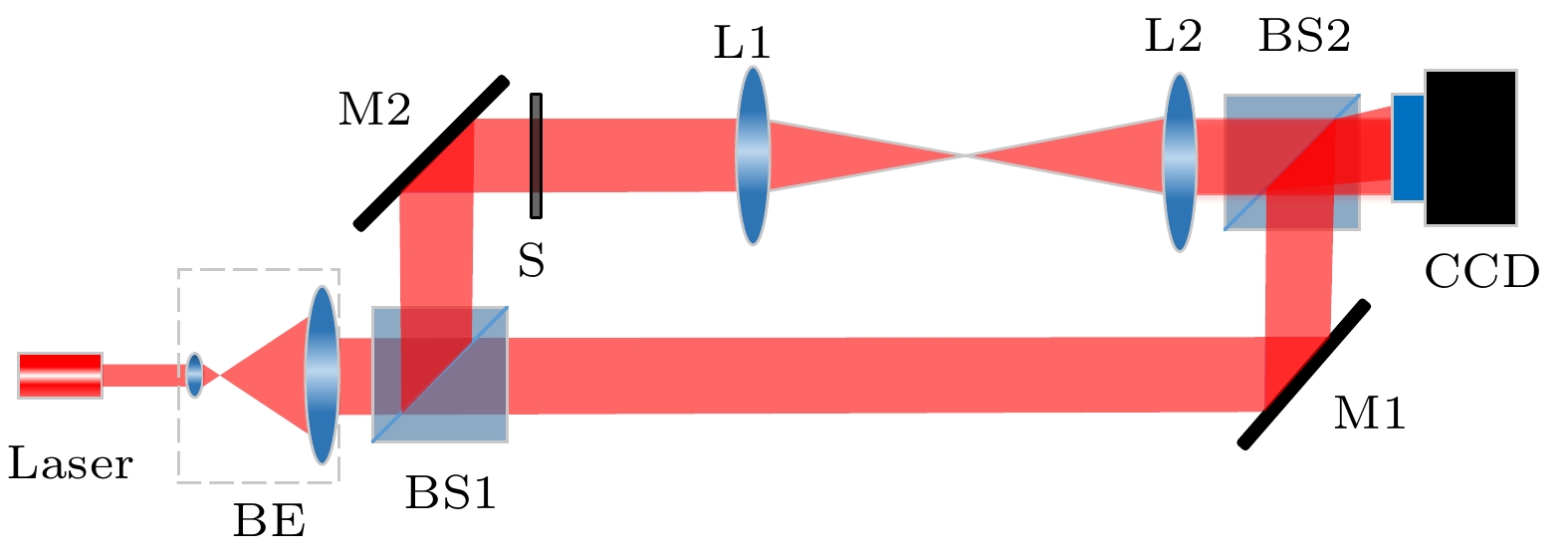
2021, 70 (15): 154202.
doi: 10.7498/aps.70.20210190
Abstract +
In-line digital holography usually employs a phase retrieval algorithm to decouple the phase information but fails to eliminate the unwanted DC and twin image terms when the measured sample does not agree with the sparsity. While the off-axis digital holography can efficiently remove the unwanted image terms but can not reserve the high frequencies of the sample to realize high resolution. The in-line-and-off-axis hybrid digital holography was then developed to provide a relatively high resolution digital holographic imaging without considering the effect of the unwanted terms. In other words, the in-line-and-off-axis hybrid digital holography merges all of the best virtues of the mentioned-above methods in an efficient and elegant way. However, this state-of-the-art method requires prior knowledge about the diffraction distance, which results in time-consuming and low accuracy. In other sense, telecentric technology can realize non-diffractive imaging without the knowledge about the diffraction distance or spherical aberration or defocusing aberration. Therefore, in this paper, a novel in-line-and-off-axis hybrid digital holography is proposed by introducing telecentric imaging architecture, and the corresponding reconstruction method is further proposed by utilizing constrained iterative approach. In this method, telecentric in-line-and-off-axis hybrid digital holography is first used to acquire focused off-axis and in-line holograms, respectively. The low resolution phase information is reconstructed from the off-axis hologram by using Fourier transform method with the help of the sample-free off-axis hologram, and then multiplexed with the amplitude information obtained from the in-line hologram to act as the initial complex amplitude in the iterative recovery process. As a result, constrained iterations are carried out in the spatial domain and frequency domain to realize high resolution and high speed reconstruction. After simulations, we build an experimental setup and demonstrate the operation of the method with USAF resolution target, onion cells and bee wings. Both the simulation and experimental results show that the proposed method can require no prior knowledge to suppress the phase disturbance caused by the unwanted image terms and optical aberrations, resulting in high speed and full utilization of spatial bandwidth product of the digital camera to yield high resolution reconstruction. We hope that the proposed method will have most practical applications in the case where large resolution, high speed and good quality are needed.
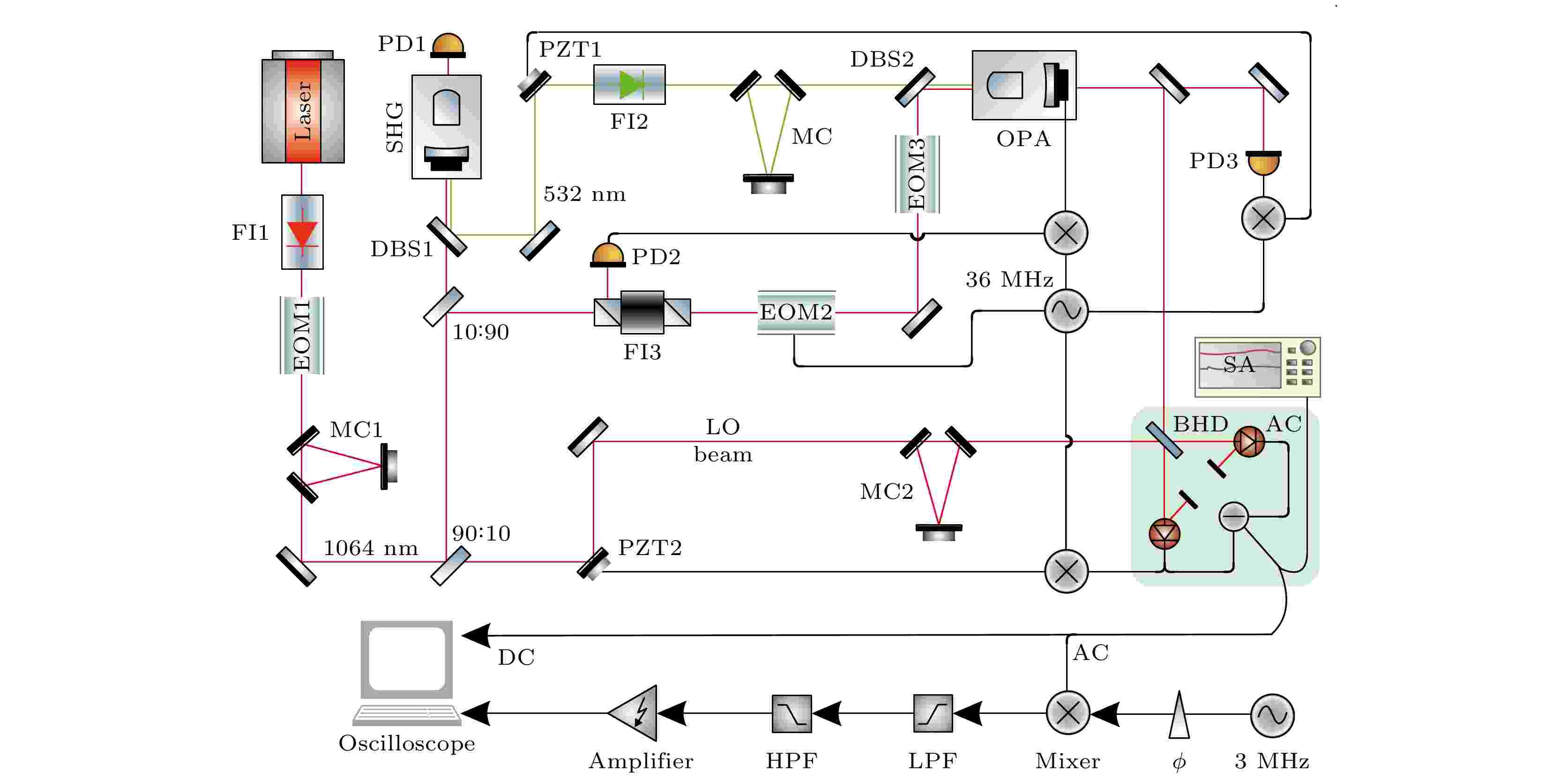
EDITOR'S SUGGESTION
2021, 70 (15): 154203.
doi: 10.7498/aps.70.20210318
Abstract +
Generation and manipulation of continuous variable quantum states are the building blocks of quantum communication, quantum key distribution and quantum networks. According to the second-order nonlinear process of the periodically-poled potassium titanyl phosphate (PPKTP) crystal, we design a semi-monolithic optical parametric amplifier (OPA) cavity to generate the bright squeezed light at a wavelength of 1064 nm. With the injection of a seed beam, the squeezed state generated by the OPA has a coherent amplitude, so called bright squeezed state. The squeezing level is directly observed to be –11.6 dB when the pump power is 310 mW at an analysis frequency of 3 MHz. However, with the increase of the pump power, the purity of the squeezed state gets lower and lower due to the increased influence of the anti-squeezing quadrature component on the squeezed quadrature component in the detection process. To obtain a higher purity of the squeezed state for achieving linear optical manipulation and quantum tomography, we choose the pump power of 50 mW, the squeezing level decreases to –6 dB, and the purity of the squeezed state is 98.5% in this case. An electro-optic modulator is adopted to realize the liner manipulation of the squeezed light in the phase space. During the measurement of the bright squeezed state, all the data are taken on condition that the length of the OPA cavity and relative phase between the seed beam and the pump beam are locked by a locking loop. The direct current (DC) signal of the balanced homodyne detection (BHD) is used to accurately determine the phase corresponding to the time domain signal of the squeezed state, while the alternate current (AC) signal of the BHD is mixed with the signal generated by the function generator, after passing through a low-pass filter and a high-pass filter, the signal is then amplified by using a low-noise amplifier. A high-performance oscilloscope is finally used to simultaneously collect the signals, thus obtaining the quantum noise signal of the bright squeezed light after linear manipulation. Together with the maximum likelihood estimation algorithm, the quantum tomography, the density matrix and the Wigner function of the bright squeezed light are obtained, that is, all the information such as the photon number distribution of the quantum state is determined. Multiple iterations are taken in the maximum likelihood estimation algorithm process to eliminate the influence of the low quantum efficiency on the detection system, so that the density matrix is fitted well with the theoretical results.

2021, 70 (15): 154204.
doi: 10.7498/aps.70.20210173
Abstract +
In this paper, we develop a new method to adjust the Raman coupling strength by using the relative phase between two pairs of Raman lasers. The stimulated Raman transition process is highly controllable and has the characteristics of multiple degrees of freedom. In experiments on ultracold atoms, the populations of atomic energy levels can be adjusted by taking an appropriate Raman light intensity and interaction time, and by detuning the two-photon frequency. The intensity of the Raman laser is usually changed to adjust the Raman coupling strength. Based on two-level atoms, a new method of accurately controlling the Raman coupling strength by using the relative phase between two pairs of Raman light beams is developed. This technology can achieve coherent manipulation of atomic quantum states, which greatly broadens the ability of ultracold atoms to perform quantum simulations. First, the 87Rb Bose-Einstein condensate is realized by using an optical dipole trap. Then, the two pairs of Raman lasers are designed with a special optical path to keep the relative phase of the two pairs of Raman lasers stable in the transmission process, and can be controlled accurately. Then the two pairs of Raman light beams act on the two ground state hyperfine energy levels $ |1, 1\rangle $ and $ |1, 0\rangle $ of the 87Rb atom. In the experiment, we observe the relation between the percentage of atoms in the two quantum states and the relative phase between the two pairs of Raman light beams. This method provides a unique control parameter for ultracold atom quantum simulation experiments, which is the laser phase. It is hoped that this technology can be used to manipulate the interaction between light and atoms in the future to achieve more abundant physical phenomena.
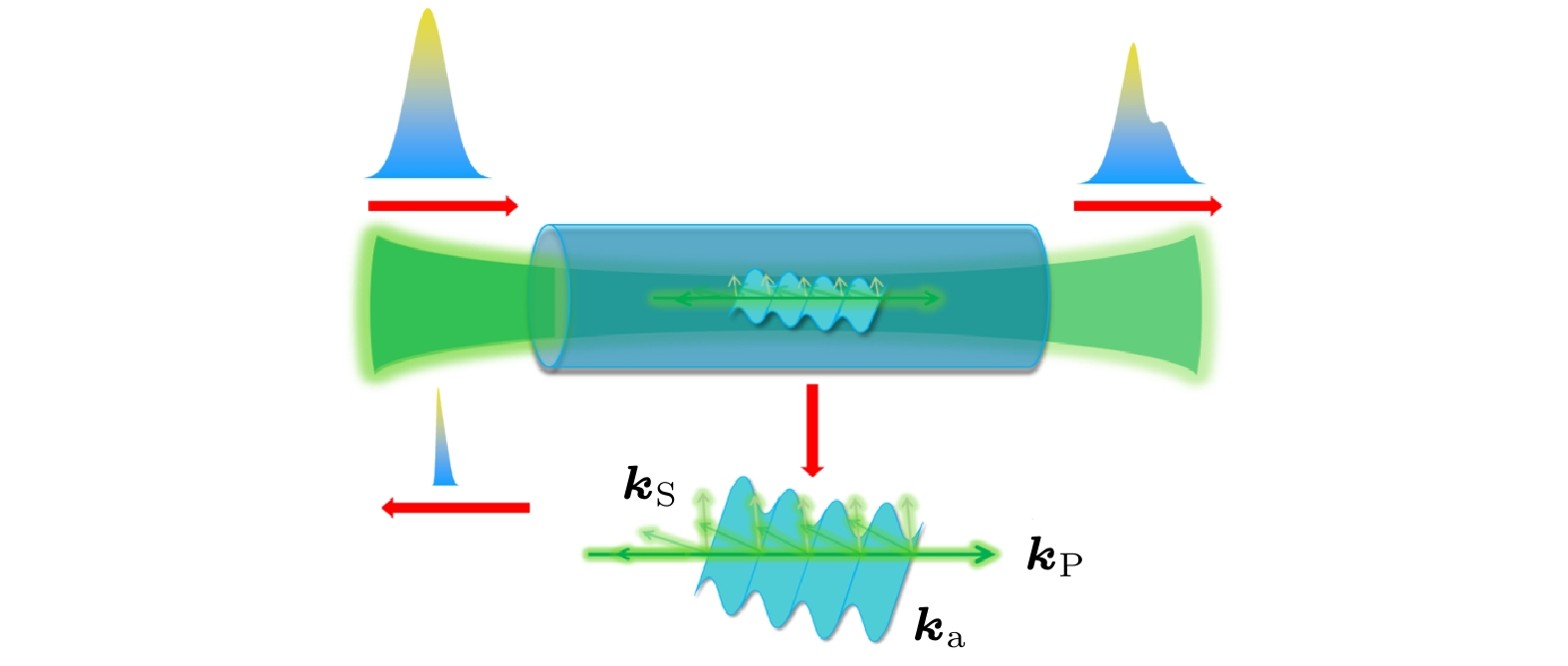
2021, 70 (15): 154205.
doi: 10.7498/aps.70.20210326
Abstract +
Stimulated Brillouin scattering (SBS) is a typical inelastic scattering effect generated by the interaction between intense incident laser and the acoustic wave field in medium and has always been an active research topic in nonlinear optics. The SBS can be used as a novel LIDAR technology for active optical remote sensing of temperature and sound speed structure in ocean. Although, the threshold value and gain property of SBS at normal temperature are studied, none of the threshold values and gain coefficients of SBS at different temperatures, pressures and attenuation coefficients has been investigated in detail. Further, neither the relation between threshold value and water pressure nor the relation between gain coefficient and water pressure is clear now, and little work has been reported. The theoretical and experimental studies of the influence of water parameters on the threshold value and gain coefficient of SBS are still scanty. In this paper, the effects of temperature, pressure and attenuation coefficient of water on threshold value and gain coefficient of SBS are studied theoretically and experimentally. Theoretically, the variations of threshold value and gain coefficient of SBS with temperature, pressure and attenuation coefficient are analyzed by the average attenuation coefficient method based on the distributed noise model (DNM) and coupled wave equations. The temporal waveforms of Stokes-, pump- and transmission-beam at different water parameters are obtained by using the DNM. Experimentally, a temperature-pressure controlled simulator is designed to obtain the threshold values and gain coefficients of SBS in water at different temperatures, pressures and attenuation coefficients through measuring the change of attenuation coefficient of laser pulses. The results indicate that (i) the threshold value of SBS increases with pressure increasing at the same temperature and decreases with temperature increasing at the same pressure; (ii) the threshold value is positively correlated with the attenuation coefficient at the same temperature and pressure; (iii) the gain coefficient of SBS increases with temperature increasing at the same pressure and decreases with pressure increasing at the same temperature. We also find that the temperature and attenuation coefficient have greater effect on threshold value and gain coefficient of SBS than the water pressure. The studied results are of great significance in realizing the ocean remote sensing by SBS lidar.

EDITOR'S SUGGESTION
2021, 70 (15): 154206.
doi: 10.7498/aps.70.20210332
Abstract +
Subwavelength artificial structures of high refractive index dielectrics provide an effective way to control and manipulate light on a nanoscale by enhancing electric and magnetic fields. This kind of structure usually has low absorption loss, but its performance is also limited by radiation loss, which will reduce the efficiency of its nonlinear response. This problem can be solved by using bound states in the continuum (BICs). The BICs are a kind of unconventional state which is in continuous domain but remains localized. They exist within a light cone and have an infinite quality factor. By combining BICs with nonlinear optics, high-Q resonances from quasi-BICs are used to excite and enhance the nonlinear response. The simulation shows that when the symmetry of the unit cell of the silicon nanoparticle arrays is broken, the BIC become the quasi-BIC, and the transmission spectrum will produce a high-Q narrow resonance valley. The resonance has polarization dependence of electric field. With the change of pump wavelength, the third-harmonic generation (THG) intensity first increases and then decreases gradually. The pump wavelength changed by several nanometers can change THG intensity by at least one order of magnitude. When the pump wavelength is adjusted to the resonance wavelength, the nonlinearity is significantly enhanced as a result of the strong field localization. The THG intensity is highly sensitive to the variation of asymmetric parameters. Only a change of 75 nm will result in a decrease of THG intensity by at least one order of magnitude. There is a third-order relationship between pump power and THG power. For the proposed structure, the factors affecting the conversion efficiency of THG include pump power, pump wavelength, polarization angle of pump light, and asymmetry parameter. When the polarization direction of electric field is along the short axis of the structure and the pump light at resonance wavelength is vertically incident to the structure with an asymmetric parameter of 0.125, the conversion efficiency of THG can be increased to ~2.6 × 10–6 and the intensity of THG is increased by six orders of magnitude. The results are expected to be applied to designing the silicon-based optical nonlinear devices.

2021, 70 (15): 154207.
doi: 10.7498/aps.70.20210228
Abstract +
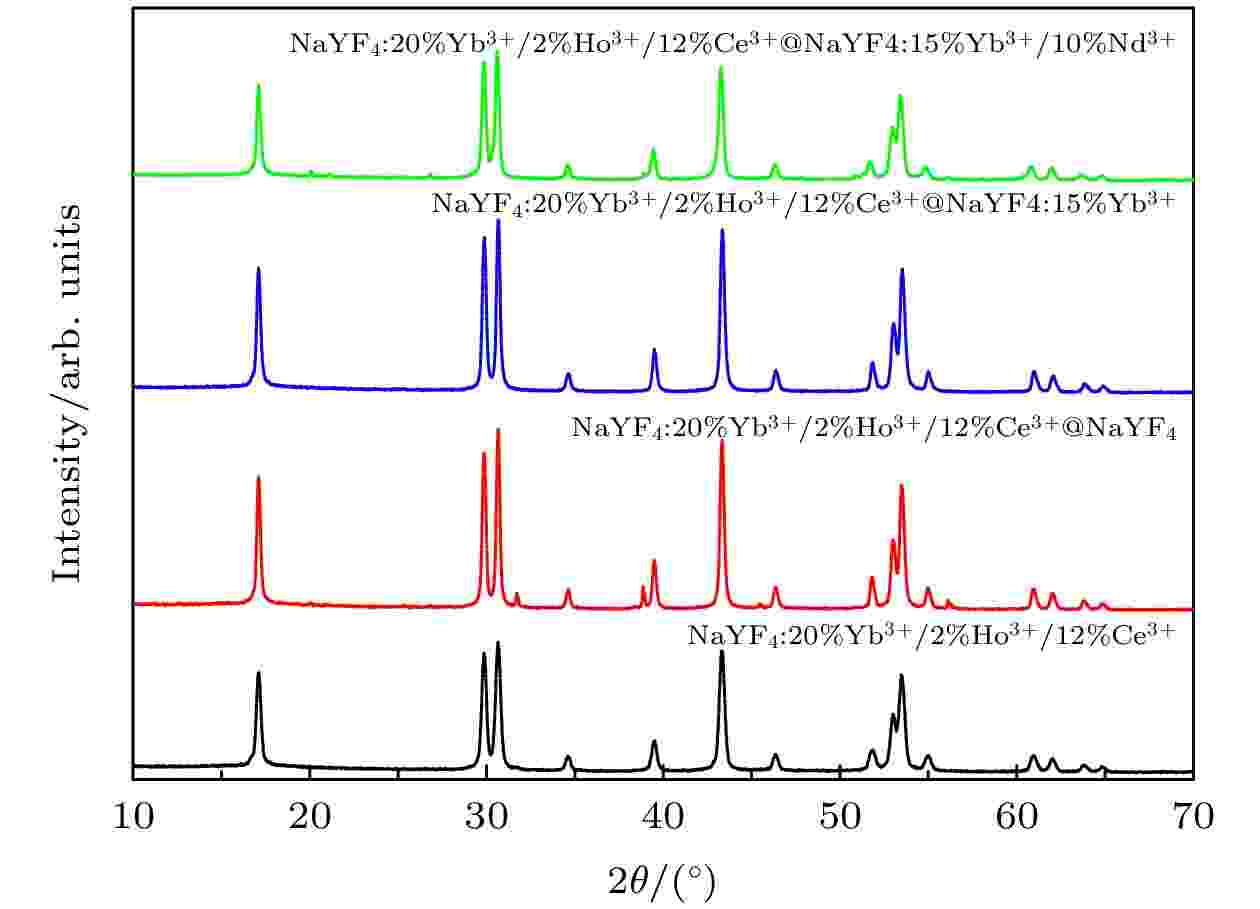
EDITOR'S SUGGESTION
2021, 70 (15): 154208.
doi: 10.7498/aps.70.20210118
Abstract +
The red upconversion (UC) emission of Ho3+ ions is located in an “optical window” range of the biological tissue, which has great prospects in the biology application. In this work, the NaYF4:20%Yb3+/2%Ho3+/12%Ce3+@NaYF4:x%Yb3+ and NaYF4:20%Yb3+/2%Ho3+/12%Ce3+@NaYF4:15%Yb3+/x%Nd3+ core-shell (CS) nanoparticles (NPs) are built based on the epitaxial growth technology by the high-temperature co-precipitation method in order to enhance red UC emission. The crystal structure and morphology of NaYF4 CS NPs are characterized by X-ray diffraction and transmission electron microscope. It can be found that the morphology of NaYF4 CS NPs changes from sphere into rod shape when coated with NaYF4 shell, and has a pure hexagonal-phase crystal structure. Under 980 nm excitation, the red UC emission intensity of NaYF4:20%Yb3+/2%Ho3+/12%Ce3+@NaYF4:5%Yb3+ CS NPs is strongest and enhanced about 5.2 times than that of NaYF4:20%Yb3+/2%Ho3+/12%Ce3+ NPs. Under 800 nm excitation, the red emission intensity of NaYF4:20%Yb3+/2%Ho3+/12%Ce3+@NaYF4:15%Yb3+/20%Nd3+ CS NPs is increased about 6.1 times compared with that of the NaYF4:20%Yb3+/2%Ho3+/12%Ce3+@NaYF4:15%Yb3+/5%Nd3+ CS NPs. This is because the constructed CS effectively reduces the non-radiative decay from the surface defects of NPs, and the doped Yb3+ and Nd3+ ions in the NaYF4 shells can transfer more excitation energy to Ho3+ ions in the core. In addition, the NaYF4: 20%Yb3+/2%Ho3+/12%Ce3+@NaYF4:15%Yb3+/20%Nd3+ CS NP is excited by dual-wavelengths co-excitation (800 nm + 980 nm). It is found that the red UC emission intensity under the co-excitation of dual-wavelengths is higher than the sum of the excitation intensities of two single wavelengths (800 nm and 980 nm), which is due to the synergistic effect generated under the co-excitation of 980 nm and 800 nm near infrared laser. Therefore, different CS structures constructed by introducing different energy transfer channels can achieve the enhancement of the red UC emission under different excitation conditions, and the dual-wavelength co-excitation provides a new way to improve the penetration depth and the detection sensitivity for further expanding the applications in the field of biomedicine.
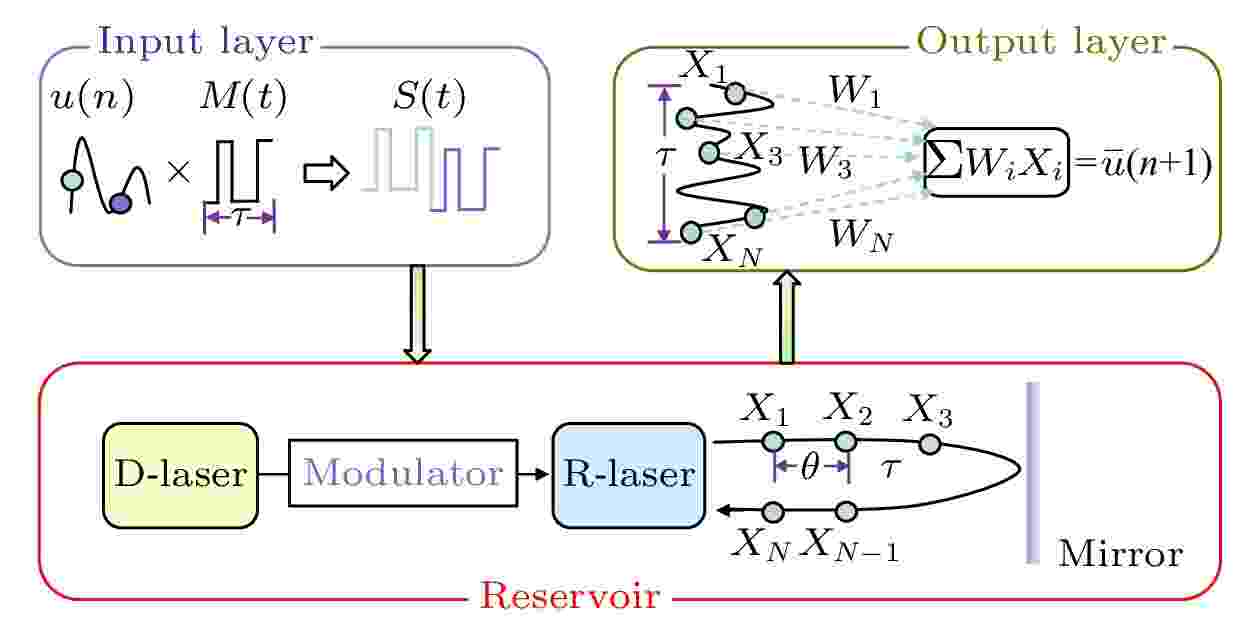
2021, 70 (15): 154209.
doi: 10.7498/aps.70.20210355
Abstract +

2021, 70 (15): 154301.
doi: 10.7498/aps.70.20202172
Abstract +
Owing to the low energy density of sound energy in nature, it is difficult to realize the local enhancement effect of sound field in air. Therefore, it is of great significance to explore new physical mechanisms and methods to achieve sound field enhancement. In recent years, artificial Mie resonance structure as a kind of acoustic metamaterial has attracted considerable attention, which has a variety of resonant modes, such as monopolar, dipolar, quadrupolar and higher multipolar modes. Compared with local resonance, acoustic Mie resonance mode has strong acoustic interaction, which can effectively enhance the acoustic field by the coupling of the Mie resonance. In this paper, we design an acoustic metamaterial composed of multiple-cavity unit cells, which is capable of realizing sound field enhancement. The multiple-cavity unit is circular in external shape and it is composed of a circular central cavity and twelve resonators. The twelve resonators are evenly distributed around the circular central cavity, with three resonators combined into a group. This exotic function arises from the compound monopole Mie resonance introduced by mutual coupling between the system structure and the monopole Mie resonance of each unit cell. Symmetric and asymmetric metamaterials are constructed by arranging several multiple-cavity unit cells in different forms. These two kinds of metamaterials can be used to achieve sound field enhancement with different effects. The results show that due to the symmetry of metamaterial structure, the symmetric metamaterials with square, circle, rectangle and regular hexagon shapes can realize the sound field enhancement, which is independent of the direction of incident wave. However, for the asymmetric metamaterial with equilateral triangle shape, the sound intensity in the center of the system varies with incident direction, which indicates that the designed asymmetric metamaterial has a strong dependence on the direction of incident wave. These two kinds of metamaterials constructed in this research can possess a number of potential applications such as in sound insulation, acoustic sensor, noise location, acoustic communication and asymmetric acoustic device. These two kinds of metamaterials constructed in this research can possess a number of potential applications such as in sound insulation.

2021, 70 (15): 154701.
doi: 10.7498/aps.70.20210194
Abstract +
Ultrasound-induced cavitation in the viscoelastic biological tissues has attracted considerable attention due to its mechanical bio-effects, such as cell sonoporation, hemolysis, vascular disruption and tissue erosion. Cavitation can exert strong mechanical stresses on the surrounding tissues during the rapid bubble growth and collapse. The occurrence of cavitation needs the ultrasound exposure exceeding a certain acoustic pressure threshold, and the cavitation threshold is very high in most tissues, probably causing undesirable side-effects. Introducing artificial cavitation nuclei, e.g., microbubbles and nanodroplets stabilized with a shell such as albumin, lipids or polymers, into the targeted region can effectively reduce the cavitation threshold and significantly enhance the cavitation effects. However, neither the cavitation dynamics of an encapsulated microbubble nor the cavitation-induced stress field around the bubble in a soft tissue is quite clear. In this study, a comprehensive numerical model is developed to describe the dynamics of a lipid-shelled microbubble in vivo and quantify the cavitation-induced mechanical stress in the tissue. Considering the nonlinear changes of both shell viscosity and elasticity, a Gilmore model that has been considered as the most developed and realistic cavitation model is coupled with the Zener viscoelastic model for precisely describing tissue viscoelastic behavior with both creep recovery and stress relaxation of tissue. The developed model has an advantage of accurately describing the bubble behaviors in different biological tissues at high ultrasound intensities, especially for the bubble collapse. Furthermore, the spatiotemporal evolution of mechanical stress in the surrounding tissue generated by the cavitation bubble is investigated. Finally, the effects of encapsulated shell, elasticity modulus and viscosity of tissue as well as ultrasound amplitude are examined. The results show that the viscoelasticity of encapsulated shell and tissue both inhibit the bubble oscillations, and the tissue viscoelasticity has a larger inhibition effect. During the bubble oscillation, the compressive (negative) stress is generated in the tissue with the bubble growing and it continuously increases until it reaches a maximum value at a maximum radius, while the tensile (positive) stress is generated at the stage of bubble collapse and initial stage of bubble rebound due to the restoration of deformed tissue. The stress magnitude is greatest near the bubble wall and decreases rapidly with depth extending into the surrounding tissue. By contrast, the tensile stress decreases at a higher rate than the compressive stress. The encapsulated bubble presents a smaller stress in the tissue, but the decrease of the stress can be ignored at large acoustic pressures. Moreover, the stress decreases with the increase of tissue elasticity modulus, whereas it first increases and then decreases with tissue viscosity increasing, showing a maximum at 15 mPa·s. The increasing of the ultrasound amplitude enhances the bubble oscillations and consequently increases the stress in the tissue. This study is helpful in understanding the bubble dynamics and cavitation-induced mechanical stress of an encapsulated microbubble in soft tissue, which is essential for a safe and precise ultrasound therapy.
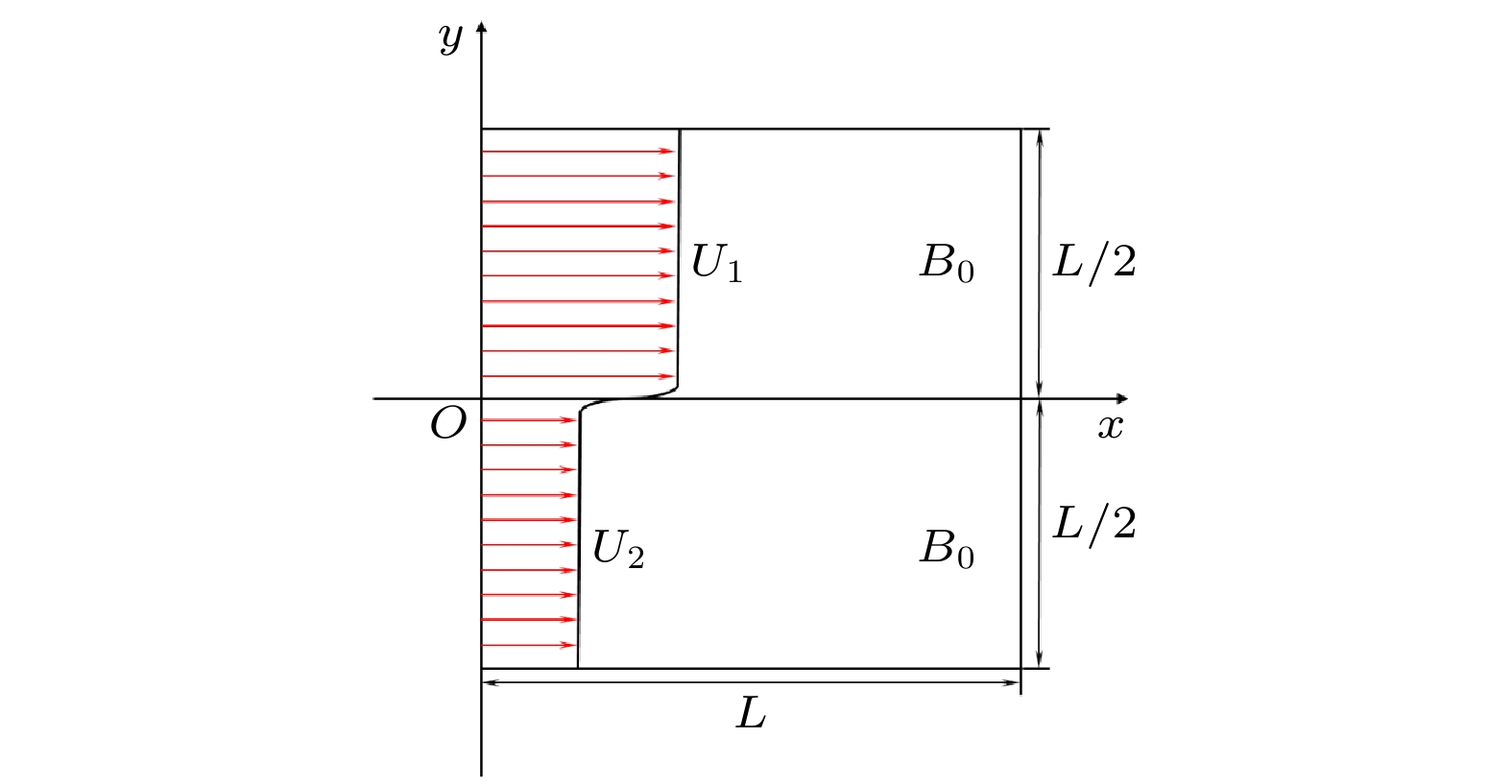
2021, 70 (15): 154702.
doi: 10.7498/aps.70.20202024
Abstract +
The evolution of the Kelvin-Helmholtz (KH) instability in the presence of classical hydrodynamics and magneto-hydro-dynamics is investigated numerically by using the magneto-hydro-dynamic (MHD) equations. The MHD equations are solved with the corner transport upwind plus constrained transport algorithm that guarantees the divergence-free constraint in the magnetic field. The numerical results are used to analyze the effects of magnetic field (${M_{\rm{A}}} = 3.33$ ) on the vorticity and pressure evolution of mixing layer, and also compared with those in the hydrodynamics situation. Moreover, the mechanism of weakening the effect of magnetic field on the KH instability is revealed from the perspectives of the magnetic pressure and the magnetic tension. The results show that the external magnetic field has a great influence on the flow structure of the mixing layer. Specifically, the magnetic pressure has a major effect in the vorticity deposition on the interface, whereas the magnetic tension generates a torque to counter the scrolling of vortex. As a result, the large vortex structure is stretched and destroyed, and finally restrains the vortex rolling-up. In addition, with the development of mixing layer, the interface will separate at the points of maximum curvature under the joint effect of the magnetic pressure, the magnetic tension and the pressure field, and finally form a fishhook-like vortex structure.
PHYSICS OF GASES, PLASMAS, AND ELECTRIC DISCHARGES

2021, 70 (15): 155201.
doi: 10.7498/aps.70.20202091
Abstract +
Atmospheric pressure non-equilibrium low-temperature plasma has been widely used in biomedicine, surface treatment and other fields, which has attracted the attention of researchers extensively. As one of the important methods to generate such a plasma, the plasma jet has become a popular method, which can generate a remote plasma plume at the nozzle through introducing a rare gas flow. However, plasma plume has a small diameter, which results in deficiency for the large-scale surface treatment. A dielectric barrier discharge device with three electrodes is utilized to produce a large brush-shaped plasma plume (50.0 mm × 40.0 mm) downstream of flowing argon under the combined excitation of an alternate current (AC) voltage and a negative bias voltage, thereby increasing the plume scale. The results show that the luminescence intensity of the plasma plume increases with AC peak voltage increasing. By fast photography implemented with an intensified charge coupled device (ICCD), it is found that the plasma plume is composed of temporally superposed branched-streamers. The ICCD images also reveal that the number of branches increases with AC peak voltage increasing. Moreover, the waveforms of AC voltage and light emission signal recorded simultaneously indicate that the plasma plume initiates once per AC voltage cycle, which occurs in the positive half cycle of the applied voltage. With AC peak voltage increasing, the duration and intensity of discharge pulse increase, which results from more branches of the branched streamer. Besides, optical emission spectrum in a range from 300 nm to 850 nm mainly includes OH (A2Σ+–X2Π) peaked at 308.0 nm, the second positive system of N2 (C3Πu–B3Πg), Ar I (4p–4s), and O I (3p3 P–3s3 S) at 844.6 nm. Based on the optical emission spectrum, the plasma parameters such as vibrational temperature and intensity ratio of spectral lines (correlated with electron density and electron temperature) are investigated. Besides, the variation of concentration of oxygen atoms in the plasma plume with experimental parameters is investigated by optical actinometry. The results indicate that the concentration of oxygen atoms first increases and then decreases with the distance increasing along the argon flow direction or with oxygen content of the working gas increasing. In addition, the concentration of oxygen atoms increases with AC peak voltage increasing. All these results are discussed qualitatively. These results are of great importance in modifying the plasma surface on a large scale.
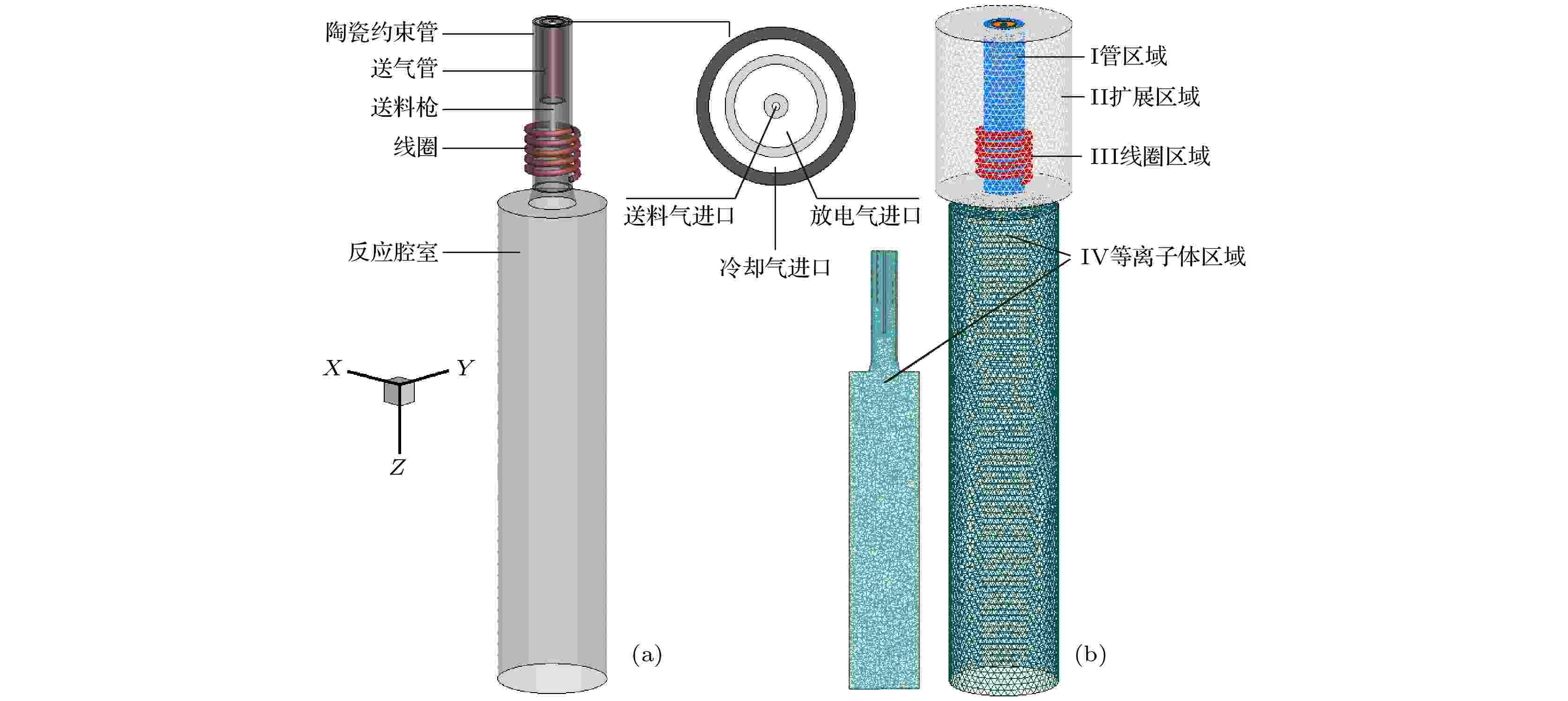
2021, 70 (15): 155202.
doi: 10.7498/aps.70.20202135
Abstract +
Radio frequency (RF) thermal plasma involves abundant and complex physics. The understanding of the physical field distributions of the RF thermal plasma is helpful to its applications in industrial field. In this paper, an electro-thermal-magnetic-flow strong coupling mathematical and physical model of three-dimensional RF thermal plasma is established, the actual solenoid structure of the induction coil is considered, and a C++ code is developed for calculating the complex electromagnetic field in a customized version of the computational fluid dynamics commercial code FLUENT. The physical fields of RF thermal plasma, such as temperature field, flow field and electromagnetic field are studied. The electrical conductivity, thermal conductivity and viscosity distribution of the plasma are investigated. The results show that the physical field distribution of RF thermal plasma has an important non-axisymmetric three-dimensional effect due to the actual shape of the non-axisymmetric induction coil structure. The plasma discharge presents an annular distribution with a certain deflection angle. The distribution of plasma flow field shows a non-axisymmetric electromagnetic pump effect which is different from that of the two-dimensional model. The results have great guiding significance for optimizing and controlling the RF thermal plasma in various application areas.
CONDENSED MATTER: STRUCTURAL, MECHANICAL, AND THERMAL PROPERTIES

2021, 70 (15): 156101.
doi: 10.7498/aps.70.20210351
Abstract +
Hydrogen plays a crucial role in realizing modern silicon devices. Molecular hydrogen may be found in processes of integrated circuit fabrication and packaging, such as wafer cleaning procedure, film depositions, high- and low-temperature anneal and die attachment by forming gas. It has been shown that hydrogen has strong effects on the total dose and dose rate response to bipolar devices. In order to study the relationship between hydrogen and radiation-induced products, we preform two experiments by using gate-lateral PNP transistors. In the first experiment, one set of devices is soaked in 100% hydrogen gas for 60 h and another set is not soaked, they are together irradiated at 5 rad(Si)/s to a total dose of 50 krad(Si). In the second experiment, devices are irradiated at 50 rad(Si)/s to 100 krad(Si), and then one group is annealed in 100% hydrogen gas and the other is annealed in the air for 40 h at the same temperature. The results show that the damage to devices which are soaked in hydrogen before irradiation is stronger than the devices that are not soaked, the anneal characteristics of devices in hydrogen gas are also changed more greatly than in the air. So the hydrogen can enhance the radiation and anneal damage to bipolar transistors. Using the gate-sweep technique, the radiation-induced products are separated and show that the hydrogen that enters into the transistor will cause the interface traps to increase and oxide trapped charge to decrease. The main reason is that the hydrogen can react with the oxide trapped charge to produce protons which can transport to the Si/SiO2 interface, and then react with H-passivized bond to create interface trap. Based on the reaction mechanism presented in our work, a numerical model of enhanced low dose rate sensitivity including molecular hydrogen reaction and proton generation mechanism is established. The simulation results for the density of interface traps and oxide trapped charge show a trend consistent with the experimental data, which verifies the correctness of the damage mechanism. This research provides not only the basis of the study of damage mechanism of bipolar devices, but also the powerful support for hydrogen soaking irradiation acceleration method.
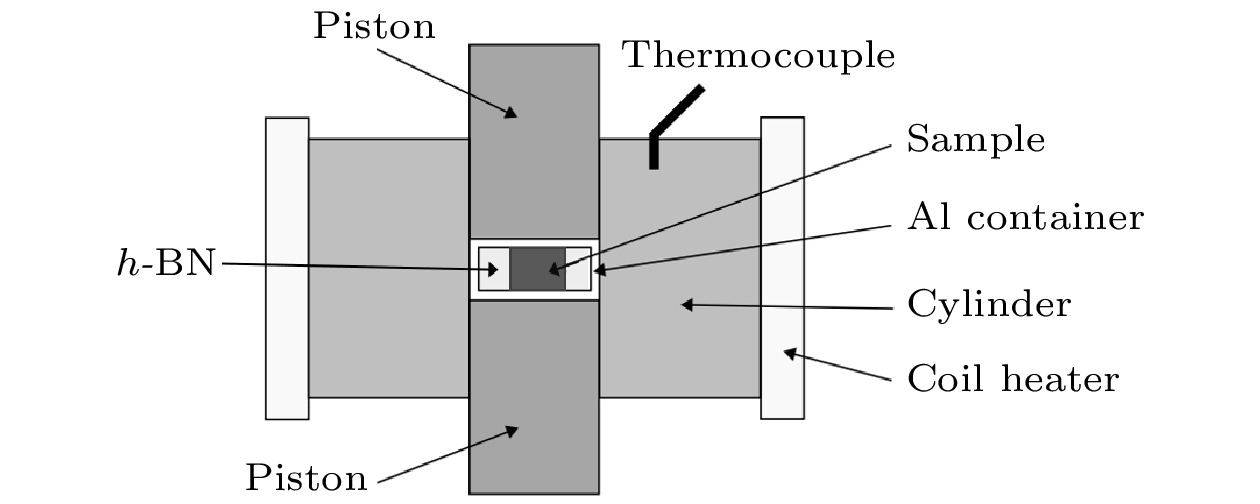
2021, 70 (15): 156201.
doi: 10.7498/aps.70.20210253
Abstract +
Amorphous selenium (Se) can be easily prepared by quenching the melt, which indicates that the Se possesses the good glass-forming ability. However, crystallization occurs after rapidly compressing the melt within about 20 ms. In this work, we investigate the mechanism of rapid compression-induced crystallization from Se melt. Compressing Se melt experiments are carried out at the following temperatures: 513, 523 and 533 K. The melt is rapidly compressed under 2.4 GPa for about 20 ms. Different holding times, i.e. 0, 30, 60 min after solidification are adopted. The samples are quenched to room temperature and then unloaded to ambient pressure. The X-ray diffraction analysis of the recovered sample indicates that the crystallization product is the t-Se. It is found that with the prolongation of holding time, the grain size increases due to the continuous aggregation growth of crystal grains. By comparing with the isothermal crystallization products of amorphous Se and ultrafine Se powder, it is suggested that the rapid compression-induced solidification product should be t-Se crystalline. The speculation that the solidification product is amorphous Se and it crystallizes in the cooling process does not hold true. The amorphous Se cannot be prepared through the rapid compression process on a millisecond scale. It is related to the thermal stability of amorphous Se under high pressure. It is reported that the dependence of crystallization temperature Tx on pressure i.e. dTx/dP for amorphous Se is about 40–50 K/GPa in a range of 0.1 MPa–1 GPa. However, the Tx of amorphous Se is almost constant in a range of 2–6 GPa. It means that the thermal stability of amorphous Se against crystallization does not increase with increasing pressure after 2 GPa. In this work, the temperature of 513–533 K in the experiments is higher than the Tx of amorphous Se. Therefore, the t-Se crystal is the stable phase and amorphous Se is unstable. The Se melt tends to crystallize in the supercooled liquid state after rapid compression. It is interesting to investigate the mechanism of dTx/dP curve discontinuous change at around 2 GPa in the future. Both the Se melt after rapid compression and the amorphous Se before crystallization are in supercooled liquid state. We speculate that high pressure may result in the microstructure transition in supercooled liquid state Se.

2021, 70 (15): 156801.
doi: 10.7498/aps.70.20210101
Abstract +
Based on the high-throughput calculation method of molecular simulation, except the structures with zero surface area and less than zero adsorption capacity, four geometric descriptors (largest cavity diameter, specific surface area, pore volume and porosity), an energy descriptor (heat of adsorption), adsorption capacity, and adsorption selectivity coefficient of 199 zeolites are obtained. By studying the correlation between structural characteristics and adsorption separation performance, the result shows that when the largest cavity diameter is 6 Å, the surface area is 1400–2100 m2·g–1, and the pore volume is in a range of 0.2–0.3 cm3·g–1, the zeolite has the greatest influence on the adsorption capacity and adsorption selectivity for methane molecules. At the same time, it is found that the largest cavity diameter and porosity of zeolite molecular sieves have a positive correlation, and there is also an obvious linear relationship between the CH4 adsorption selectivity coefficient of the equimolar CH4/H2 mixed component and the single-component CH4 adsorption capacity. By using the grand canonical Monte Carlo simulation method, physical quantities such as adsorption isotherms and isosteric heats of adsorption for CH4 and H2 of three channel-shaped zeolites are obtained. The result shows that the pore structure (surface area and pore volume) of the channel-shaped zeolite has a greater influence on the CH4 adsorption capacity than the energy effect (heat of adsorption), under the same external environment. Combining with the industrial background of steam methane reforming hydrogen production, the separation and selectivity performance of the CH4/H2 mixed system under different components are further studied. The result reveals that there is no correlation between adsorption selectivity of ultra-microporous zeolite material for CH4 and bulk pressure or feed ratio. According to the centroid distribution density of gas molecules, it is found that CH4 preferentially occupies the space of smaller pore windows in the channel-shaped zeolite, while the distribution range of H2 is larger but there is no unambiguous preferential adsorption site.
CONDENSED MATTER: ELECTRONIC STRUCTURE, ELECTRICAL, MAGNETIC, AND OPTICAL PROPERTIES

2021, 70 (15): 157101.
doi: 10.7498/aps.70.20201952
Abstract +
Since the successful synthesis of graphene, two-dimensional materials, including hexagonal boron nitride and transition mental dichalcogenides, have attracted wide attention due to their extraordinary properties and extensive applications. Recent researches have revealed that the sensing system based on graphene or MoS2 can efficiently sense various gas molecules. However, the utility of these materials is limited by their inherent weakness, i.e. the zero bandgap in graphene and the relatively low mobility in MoS2, which impede their applications in electronic devices. This further stimulates the motivation of researchers to find more novel 2D materials. Black arsenic phosphide (AsP) monolayer, a novel two-dimensional nanomaterial with the characteristics of model direct bandgap and superhigh carrier mobility, is an ideal material for gas sensor. Here in this work, we investigate the electronic and magnetic properties of monolayer AsP absorbed with small gas molecules by using first-principle calculations based on density functional theory. Four initial absorption sites are selected to explore the optimal absorption positions of CO, CO2, NH3, SO2, NO and NO2 absorbed on the monolayer AsP. The purpose is to calculate the optimal absorption configurations, the absorption energy, absorption distance, and charge transfer, thereby investigating the absorption types. The results revel that the monolayer AsP is sensitive to NO2 gas and SO2 gas via strong physical absorption, and NO gas by chemical absorption, forming a new bond between N atom and O atom. The CO, CO2 and NH3 gas are absorbed on AsP monolayer with weak van Waals force. From the point of view of charge transfer, the CO, CO2, and NH3 molecules are one order of magnitude smaller than SO2, NO and NO2, approximately 0.03e and the charge transfer of NO gas is 0.21e, highest in all gases. Besides, the effects of absorption on the electrons of AsP are investigated. The results show that the absorption of CO, CO2 and NH3 molecules have little effect on band structure, and that the absorption of SO2 molecule increases the bandgap. The absorption of magnetic gas NO and NO2 reduce the bandgap by introducing impurity level near Fermi level, giving rise to their magnetic moments of 0.83μB and 0.78μB and making the whole system magnetic. Theoretical research shows that monolayer AsP is sensitive to NO, NO2 and SO2 gas molecules, which provides theoretical guidance for the experimental preparation of gas sensors band on black arsenic phosphorus.

2021, 70 (15): 157302.
doi: 10.7498/aps.70.20202156
Abstract +
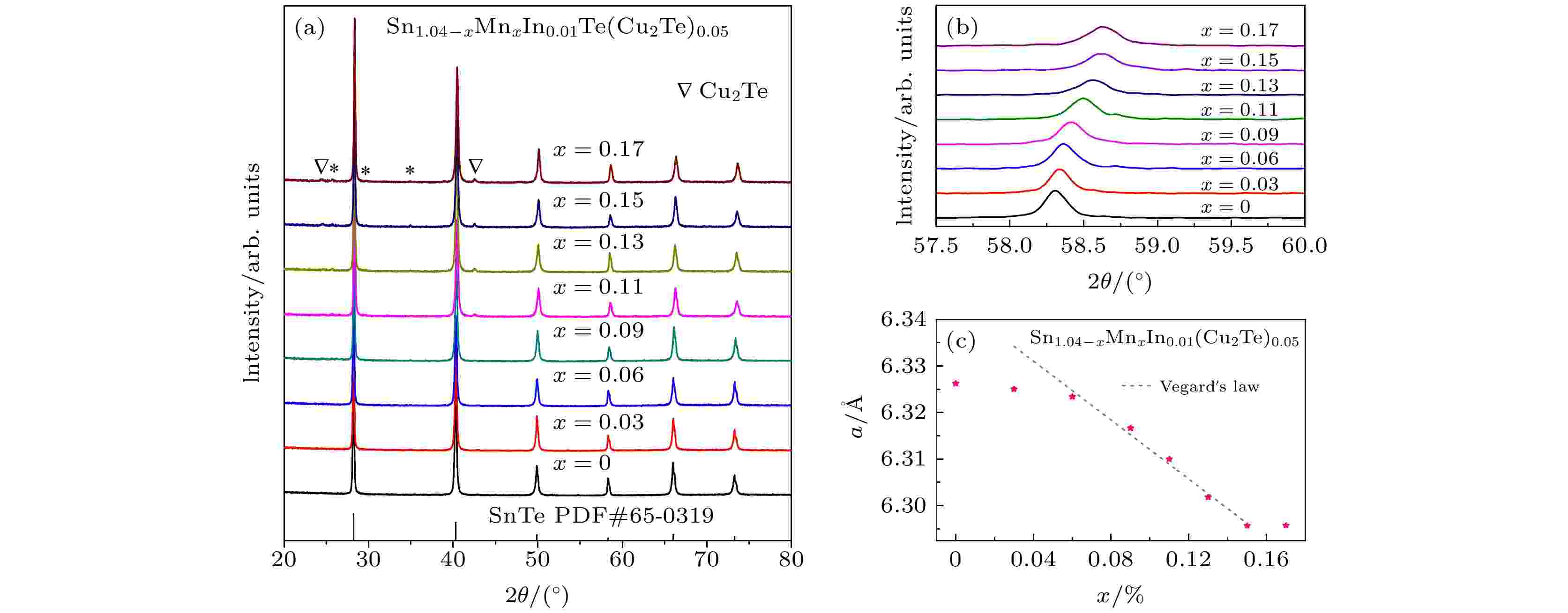
2021, 70 (15): 157401.
doi: 10.7498/aps.70.20202020
Abstract +
Lead-free chalcogenide SnTe has a similar crystal structure and energy band structure to high performance thermoelectric material PbTe, which has been widely concerned in recent years. However, due to its low Seebeck coefficient, high intrinsic Sn vacancy concentration and high thermal conductivity, its intrinsic thermoelectric performance is poor. In this study, Mn-In-Cu co-doping SnTe-based thermoelectric materials are prepared by hot pressing sintering at high-temperature and high-pressure. Indium (In) doping brings the resonant level in SnTe and increases the density of states which greatly improves Seebeck coefficient at room temperature; the Seebeck coefficient of Sn1.04In0.01Te(Cu2Te)0.05 reaches 70 μV·K–1 at room temperature. With adding manganese (Mn), the Seebeck coefficient at room temperature is well preserved, indicating that Mn doping has little effect on the resonant level brought by In doping. In addition, due to the band convergence brought by Mn doping, the high temperature Seebeck coefficient of the material is improved, the maximum Seebeck coefficient reaches 215 μV·K–1 for the sample with 17% Mn doping amount at 873 K. Owing to the combination of band convergence and resonant level, the Seebeck coefficient of the whole temperature range of the material increases, the power factor of the material is also greatly optimized, and all samples have a power factor of more than 1.0 mW·m–1·K–2 at room temperature. On the other hand, the point defects brought by Mn alloying and the interstitial defects introduced by copper (Cu) enhance the phonon scattering and effectively reduce the lattice thermal conductivity of the material, the lattice thermal conductivity decreases to 0.68 W·m–1·K–1 at 873 K. The electrical and thermal properties of the materials are optimized simultaneously under the combination of various strategies, the peak zT ≈ 1.45 is obtained at 873 K in the p-type Sn0.89Mn0.15In0.01Te(Cu2Te)0.05 sample and the average zT of 300–873 K reaches 0.76. In the process of multi-strategy coordinated regulation of SnTe-based thermoelectric materials, the excellent properties of single strategy can be well maintained, which provides a possibility for further improving the performance of SnTe-based thermoelectric materials.
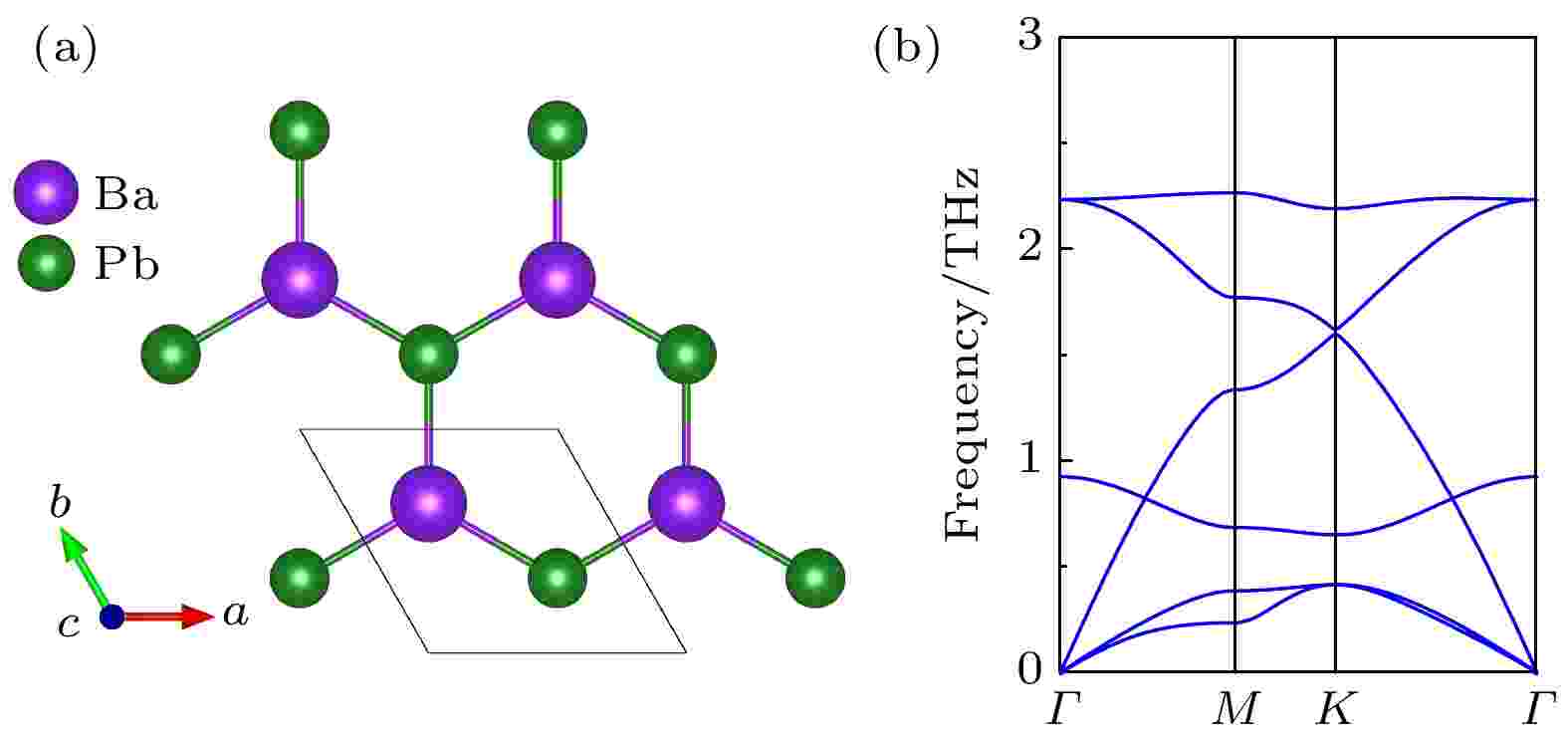
2021, 70 (15): 157502.
doi: 10.7498/aps.70.20210014
Abstract +
The quantum anomalous Hall effect is an intriguing quantum state that exhibits chiral edge states in the absence of a magnetic field. The chiral edge states are topologically protected and robust against electron scattering, which possesses great potential applications in designing low energy consumption and dissipation less spintronic devices. The experimental conditions are required to be very high, such as extremely low temperature (< 100 mK) due to the small band gap and the greatly accurate control of the extrinsic impurities. These greatly hinder their devices from being put into applications further. Hence, it would be meaningful to search for a new Chern insulator with a large band gap and high Curie temperature. According to the first-principles calculations, we predict the room temperature quantum anomalous Hall effect in the monolayer BaPb. The nontrivial topology of this new type of ferroelectric semi-metal material derives from fully spin-polarized quadratic non-Dirac bands. The quantum anomalous Hall effect can be realized in the monolayer BaPb with fully spin-polarized quadratic px,y non-Dirac bands with the nonzero Chern number (C = 1). Because of the trigonal symmetry of monolayer BaPb material, these bands composed of px,y orbitals are at the $ \varGamma $ point, which is different from the Dirac state formed by the pz orbital reported previously. In addition, it can still retain its original topological properties even if strongly hybridized with the substrate. The calculated phonon spectrum shows no imaginary frequency in the entire Brillouin zone, indicating that the monolayer BaPb system is dynamically stable. By using Monte Carlo simulation, we determine the Curie temperature of BaPb monolayer toreach up to 378 K. We also calculate the magnetic anisotropy energy of the BaPb cell, defined as $ \Delta E={E_{100}}-{E_{001}} $ . Here, we consider two magnetization easy-axis directions, [100] and [001]. To our surprise, the MAE of monolayer BaPb is as high as 52.01 meV/cell by considering the spin-orbit coupling effect. Furthermore, the nontrivial band gap is opened with a magnitude of 177.39 meV when the spin-orbit coupling effect is included. The calculations of Berry curvature and edge states further prove that the monolayer BaPb system can realize the quantum anomalous Hall state. This discovery indicates that the monolayer BaPb materials can be used as a candidate for quantum anomalous Hall effect materials, thereby promoting the development of spintronics.
INTERDISCIPLINARY PHYSICS AND RELATED AREAS OF SCIENCE AND TECHNOLOGY

2021, 70 (15): 158101.
doi: 10.7498/aps.70.20202141
Abstract +
High temperature superconductor has become one of the hotspots of research, because of its high critical temperature, strong trapped flux density, stable suspension characteristics and large magnet levitation force. The single domain REBa2Cu3O7–δ (REBCO) superconductors have the wide and potential applications in the high-tech fields, such as micro-magnet superconducting maglev train, superconducting motor and superconducting magnetic separation system. However, a large number of multi-domain samples are easy to produce in the preparation process, which leads the success rate to decrease significantly and the cost to increase considerably, which restricts its practical application process. Inspired by the top seeded infiltration growth method, we develop a reliable method of recycling failed GdBCO sample by re-supplementing the liquid phase lost in the primary growth process and pretreating the failed sample as solid phase source billets. We recycle a series of GdBCO samples by using this new technique successfully. The growth morphology, superconducting properties, and microstructures of the recycled GdBCO bulk superconductors are investigated in detail in this study. The results show that the magnetic levitation forces of the recycled GdBCO samples are all greater than 30 N, their magnetic flux densities are all above 0.3 T, and their capture efficiencies are above 60%. These results provide the scientific basis and new ideas for developing the low cost and high efficient yield of fabrication of the REBCO bulk superconductors.

2021, 70 (15): 158201.
doi: 10.7498/aps.70.20201710
Abstract +
Pattern formation and self-organization are ubiquitous in nature and commonly observed in spatially extended non-equilibrium systems. As is well known, the origin of spatio-temporal patterns can be traced to the instability of the system, and is always accompanied by a symmetry breaking phenomenon. In reality, most of non-equilibrium systems are constructed by interactions among several different units, each of which has its unique symmetry breaking mechanism. The interaction among different units described by coupled pattern forming system gives rise to a variety of self-organized patterns including stationary and/or oscillatory patterns. In this paper, the dynamics of oscillatory Turing patterns in two-layered coupled non-symmetric reaction diffusion systems are numerically investigated by linearly coupling the Brusselator model and the Lengyel-Epstein model. The interaction among the Turing modes, higher-order harmonics and Hopf mode, and their effects on oscillatory Turing pattern are also analyzed. It is shown that the supercritical Turing mode ${k_1}$ in the Lengyel-Epstein model is excited and interacts with the higher-order harmonics $\sqrt 3 {k_1}$ located in the Hopf region in the Brusselator model, and thus giving rise to the synchronous oscillatory hexagon pattern. The harmonic $\sqrt 2 {k_1}$ that can also be excited initially is some parameter domain, but it is unstable and vanishes finally. As the parameter b is increased, this oscillatory hexagon pattern first undergoes period-doubling bifurcation and transits into two-period oscillation, and then into multiple-period oscillation. When the Hopf mode participates in the interaction, the pattern will eventually transit into chaos. The synchronous oscillatory hexagon pattern can only be obtained when the subcritical Turing mode ${k_2}$ in the Brusselator model is weaker than the higher-order harmonics $\sqrt 3 {k_1}$ located in the Hopf region and neither of the two Turing modes satisfies the spatial resonance condition. The system favorites the spatial resonance and selects the super-lattice patterns when these modes interact with each other. The interaction between Hopf mode and Turing mode can only give rise to non-synchronous oscillatory patterns. Moreover, the coupling strength also has an important effect on the oscillatory Turing pattern. These results not only provide a new pattern forming mechanism which can be extended to other nonlinear systems, but also gives an opportunity for more in-depth understanding the nature and their relevance to technological applications.

Initial dynamic response and reaction mechanism of cyclotrimethylenetrinitramine under shock loading
2021, 70 (15): 158202.
doi: 10.7498/aps.70.20201279
Abstract +
At present, the relative safety of energetic materials exposed to extreme environments is concerned widely. Understanding the initial decomposition mechanism of energetic materials under impact loading is the basis for exploring new energetic materials with high energy and low sensitivity. In this paper, we study the initial dynamic response and reaction mechanism of perfect cyclotrimethylenetrinitramine (RDX) crystal and RDX crystal with a molecular vacancy defect under shock loading by using the multiscale shock technique (MSST) combined with reactive force field (ReaxFF) molecular dynamics method. The RDX perfect supercell and supercell containing a molecular vacancy are constructed to simulate the shock process by using the generalized gradient approximation method in density functional theory and Perdew-Burke-Ernzerhof functional. Before loading the shock wave, one NVE ensemble and Berendsen thermostat are used to control the RDX equilibrium process. A multi-scale impact compression is loaded along the crystal A direction. The initial temperature is 300 K and the initial pressure is set to be an atmospheric pressure. The radial distribution functions between main atoms are calculated, and the influences of shock velocity and molecular vacancy defect on shock loading process are analyzed. The evolution of N—NO2 bond and C—N bond with time in RDX perfect crystals and vacancy crystals under shock velocity of 11 km/s are given. As a result, the possible initial decomposition path of perfect RDX crystal and vacancy RDX crystal are the first fracture of N—NO2 bond, followed by the cleavage of C—N bond at small shock velocity. The initial reaction of the RDX crystal with a molecule vacancy is earlier than that of the perfect crystal, which indicates that the vacancy crystal is more sensitive to shock and more prone to decomposition. Furthermore, the fracture of C—H bond is possible after the initial cleavage of N—NO2 bond and C—N bond, and then the H atom is transferred to oxygen atom in nitro group, forming HONO. As the shock velocity increases, the number of broken chemical bonds in the two kinds of RDX crystals increases, and the reaction becomes strong. The presence of molecular vacancy defect enhances the activity of N—NO2 bond and makes it easier to break, thus accelerating the initial reaction of the vacancy crystal. The shock velocity and the particle velocity of the RDX crystal are consistent with previous experimental results and theoretical data, which shows the validity of our calculation results.

EDITOR'S SUGGESTION
2021, 70 (15): 158203.
doi: 10.7498/aps.70.20210227
Abstract +
Doping is one of the most important methods to improve the electronic conductivity and modify its electrochemical performance of LiFePO4. Rare earth elements have become an effective selection for doping modification due to their high electronic charges, large ion radii and strong self-polarization ability. In this work, we study the structural, electronic and ionic diffusion properties of LiFePO4 with rare earth (RE) doping (La, Ce, Pr) by using first-principles calculation based on density functional theory. The calculated results show that the lattice constant and cell volume of LiFePO4 increase to a different degree after RE doping. In the delithiation process, the volume change rate of the material after RE doping is significantly reduced, indicating the cycle performance of the material is improved, on the other hand, the energy density is reduced. The calculated density of states suggests that RE-doped LiFePO4 exhibits metallic characteristics, which is different from the undoped one with semiconductor characteristics. As a result, the RE-doping can increase the electronic conductivity of the material. The calculation of elastic modulus demonstrates the increase of ductility for RE-doped LiFePO4, and it can be predicted that the cycle performance and the rate performance of the RE-doped battery have great improvement. In addition, La and Ce doped LiFePO4 materials exhibit that the complex energy barrier can change during the Li ion migration, and the migration barriers vary considerably, depending on different paths, which is related to the variation of potential energy surface caused by the doping of rare-earth elements. The Li-ions are far from the RE ions, the migration barriers are obviously lower than the undoped one, while the Li-ions are closest to RE ions, the migration barriers increase essentially. Compared with Ce doping, the change of the Li-ion migration barrier caused by La doping is great, indicating that RE ion doping has a greater influence on the local structure of the system.
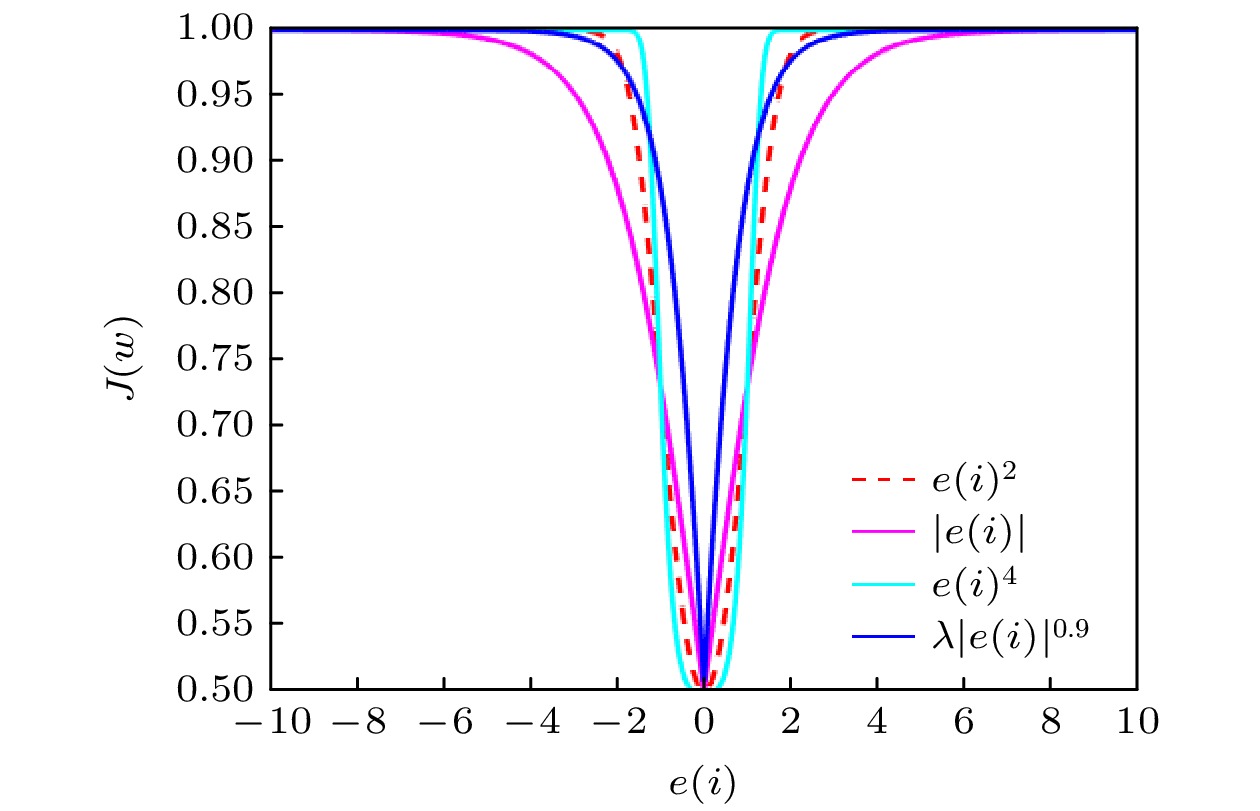
2021, 70 (15): 158401.
doi: 10.7498/aps.70.20210075
Abstract +
The adaptive kernel algorithms usually achieve a good convergence performance and a tracking performance due to the universal approximator, offering an excellent solution to many problems with nonlinearities. However, as is well known, the convergence rate and steady-state error of adaptive filtering algorithm are a pair of inherent contradictions, and the kernel method is not exceptional. For this problem, a robust kernel adaptive filtering algorithm, called the variable-scaling factor kernel fractional lower power adaptive filtering algorithm based on the Sigmoid function, is developed by creating a new framework of cost function which combines the kernel fractional low power error criterion with the Sigmoid function for system identification of different noise environments. This new cost framework incorporates a scaling factor into the cost function of the Sigmoid kernel fractional lower power adaptive filtering algorithm (VS-SKFLP) in this paper. One of the main features in the new framework is its scaling factor. This scaling factor is used to control the steepness of the Sigmoid function, and the steepness can affect the convergence speed of filtering algorithm. The scaling factor provides a tradeoff between the convergence rate and the steady-state mean square error (MSE), which improves the convergence rate under the same steady-state mean square error. However, it is also an important problem to choose an appropriate scale factor. Therefore, a variable-scale factor SKFLP algorithm is also proposed to improve the convergence rate and steady-state MSE, simultaneously. The proposed variable-scale factor structure consists of a function of error, featuring the adaptive updates of their parameter estimated by making discerning use of the error. In this paper, the nonlinear saturation characteristic of the Sigmoid function and low order norm criterion are used to overcome the performance degradation of training data destroyed by non-Gaussian impulse noise and colored noise. Through the convergence analysis, the parameter estimation sequence of our proposed algorithm proves convergent. Simulation results show that the proposed algorithm (VS-SKFLP) outperforms other kernel adaptive filtering algorithms in system recognition with different noise environments.
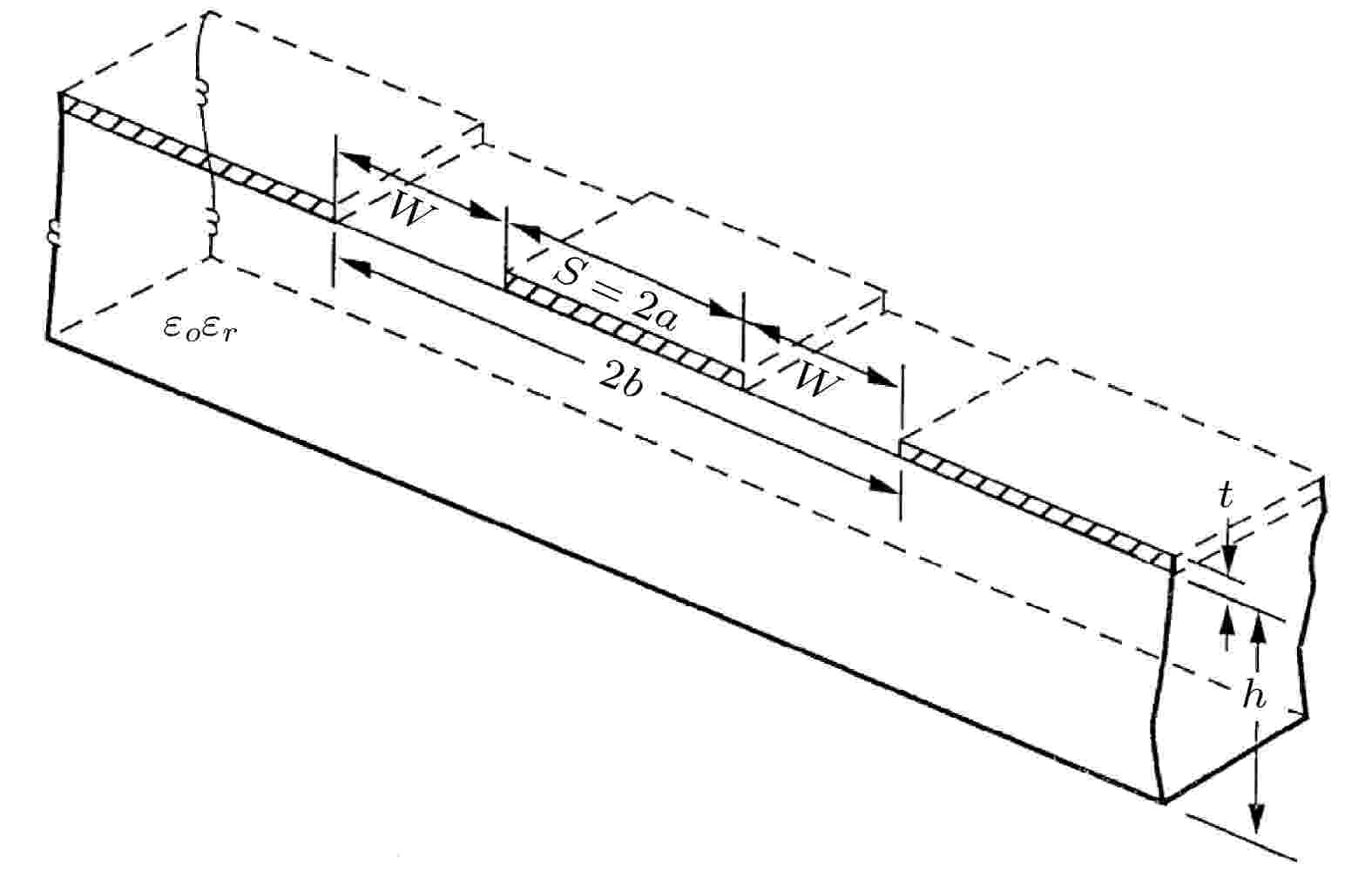
2021, 70 (15): 158501.
doi: 10.7498/aps.70.20210168
Abstract +
Power divider is a useful device that divides the power of signal into different subpowers at a certain ratio. The superconducting power divider plays an important role in various superconducting quantum computing circuits and superconducting microwave photon detectors. Therefore, in this paper we investigate how to design and prepare a typical coplanar waveguide superconducting microwave power divider. The parameters are designed by using the odd-even mode method to analyze the transport features of a three-port microwave network. Specifically, the microwave transport properties of the device with a center frequency of 5 GHz and 3 dB power division ratio are simulated. Then, the designed aluminum coplanar waveguide superconducting power divider on silicon is prepared by micro-processing technology and experimentally tested at low temperature. It is shown that the measurement results are consistent with the design parameters. It is noted that the center frequency of the actually prepared power divider is measured to be about 5.25 GHz, which is slightly different from the result of the design and simulation. This difference is probably due to the following main reasons. Firstly, the limited precision of the micromachining process is caused by the fact that the fabricated quarter-wave impedance matching line is etched incompletely, leading the length of the impedance matching line to be shortened. As a consequence, the frequency of the prepared power divider is slightly higher. Secondly, the simulation software is not designed specially for superconducting device simulations, thereby yielding the design parameters slightly different from those of the fabricated superconducting devices. Additionally, a series of attenuations has been used in the experimental test system of the superconducting microwave power dividers for reducing the various noises. This causes the input test signal to weaken, thus the reflected signal turns significantly small. Therefore, none of the S11 parameters of the device can be effectively measured. Finally, neither of S21 and S31 parameters measured in the experiment is the predicted –3 dB, which is mainly due to the imperfections in the welding between SMA connectors and high-frequency transmission lines, and the spot welding between high-frequency transmission lines and power divider samples, and also due to the discontinuities of the high-frequency transmission line and the power divider and so on. All these factors can yield the tested insertion loss of the device. Hopefully, the method in this work can be extended to designing and preparing other passive superconducting microwave devices.
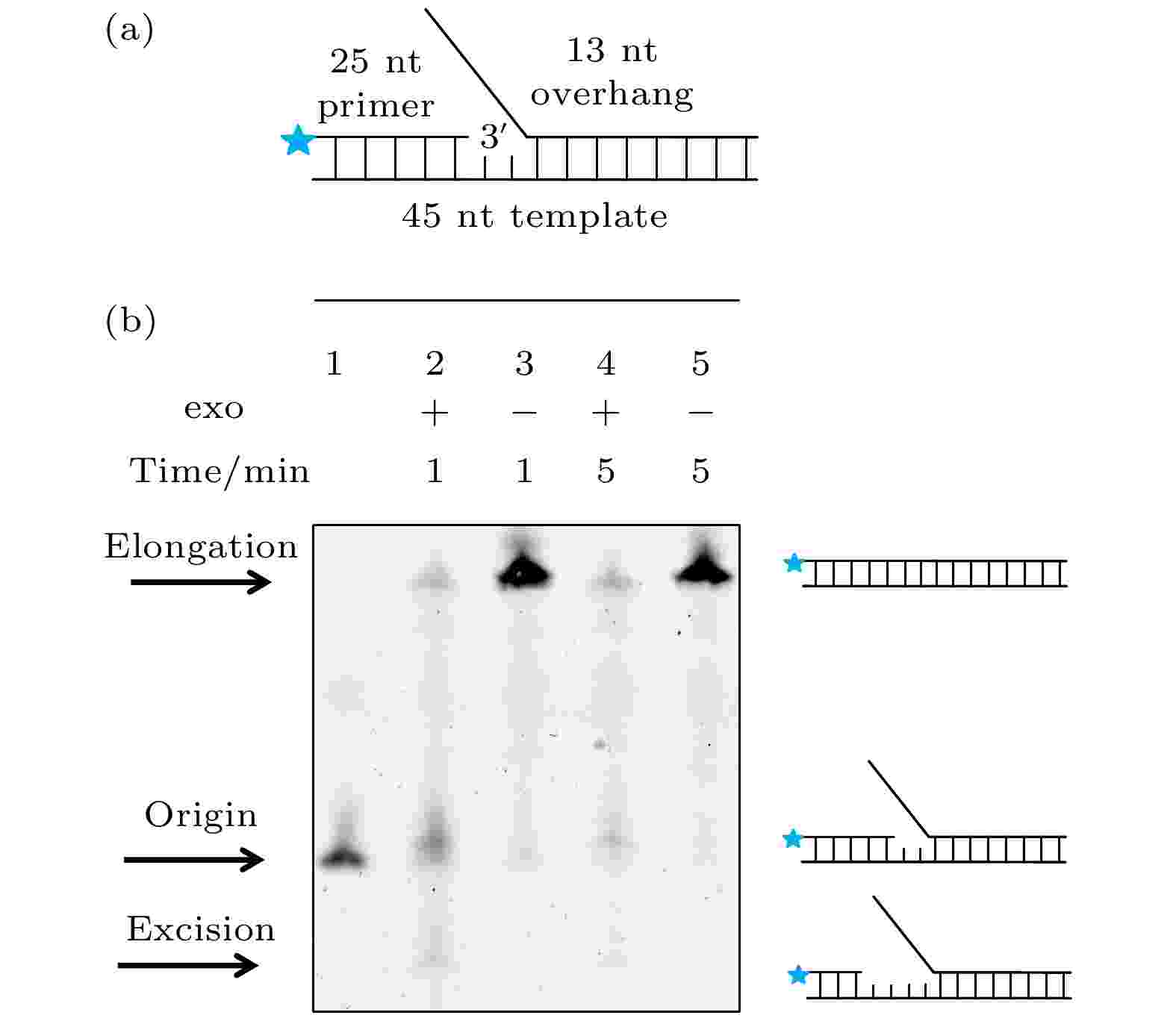
EDITOR'S SUGGESTION
2021, 70 (15): 158701.
doi: 10.7498/aps.70.20210707
Abstract +
DNA polymerase is essential for DNA replication and repair. As it only performs the 5′-3′ polymerization, there are two kinds of DNA replication. One of them is called strand-displacement synthesis: DNA polymerase opens the double-strand (ds) DNA to attain the 3′-5′strand (leading strand) and copy this template in a continuous way, and the other is extension synthesis: DNA polymerase copies the newly separated 5′-3′ strand (lagging strand) in a discontinuous manner. The replication complex of T7 phage is an optimal model to investigate the mechanism of replication because it is only constituted by 4 terms of protein which are DNA helicase gp4, DNA polymerase gp5 with co-factor thioredoxin (Trx), and single-strand (ss) DNA-binding protein gp2.5. The replication complex of T7 encounters both strand-displacement synthesis and extension synthesis. Previous researches reported that gp5 can have rapid extension synthesis but lacks the ability to attain strand-displacement synthesis. It also reported that gp4 translocates on ssDNA at a rapid speed but unwinds dsDNA at a very low speed. However, gp5 and gp4 together can attain rapid and processive strand-displacement synthesis. Although extensively studied, this mechanism remains unclear. Here in this work, the dynamic of strand-displacement synthesis by gp5 is investigated with single-molecule Förster (fluorescence) resonance energy transfer (smFRET). It is found that gp5, without the help of external tension, can open dsDNA but only attain strand-displacement synthesis about 4 base pairs (bp), because its exonuclease activity excises the nascent nucleotides. Therefore gp5 repeats in the synthesis-excision cycle which results in the less production of strand-displacement synthesis. We conduct another control experiment by nano-tensioner, a high precision smFRET setup which can exert a tension on dsDNA, to change the dsDNA regression pressure on gp5. It is observed that reduced dsDNA regression pressure can increase the length of strand-displacement synthesis and reduce the length of excision which indicates that the dsDNA regression pressure can regulate the strand-displacement synthesis of gp5. The further experiment shows that after gp5 and gp4 are assembled into a replisome, it can have a processive strand-displacement synthesis and barely any excision presented. The speed of replisome is a little higher than gp5 alone but much higher than gp4 alone. Additionally, the length of strand-displacement synthesis by replisome is much longer than gp5 alone. Therefore it is indicated that the gp4 can reduce dsDNA regression pressure to enables gp5 to attain processive strand-displacement synthesis. On the other hand, the gp5 facilitates gp4 to unwind the dsDNA.
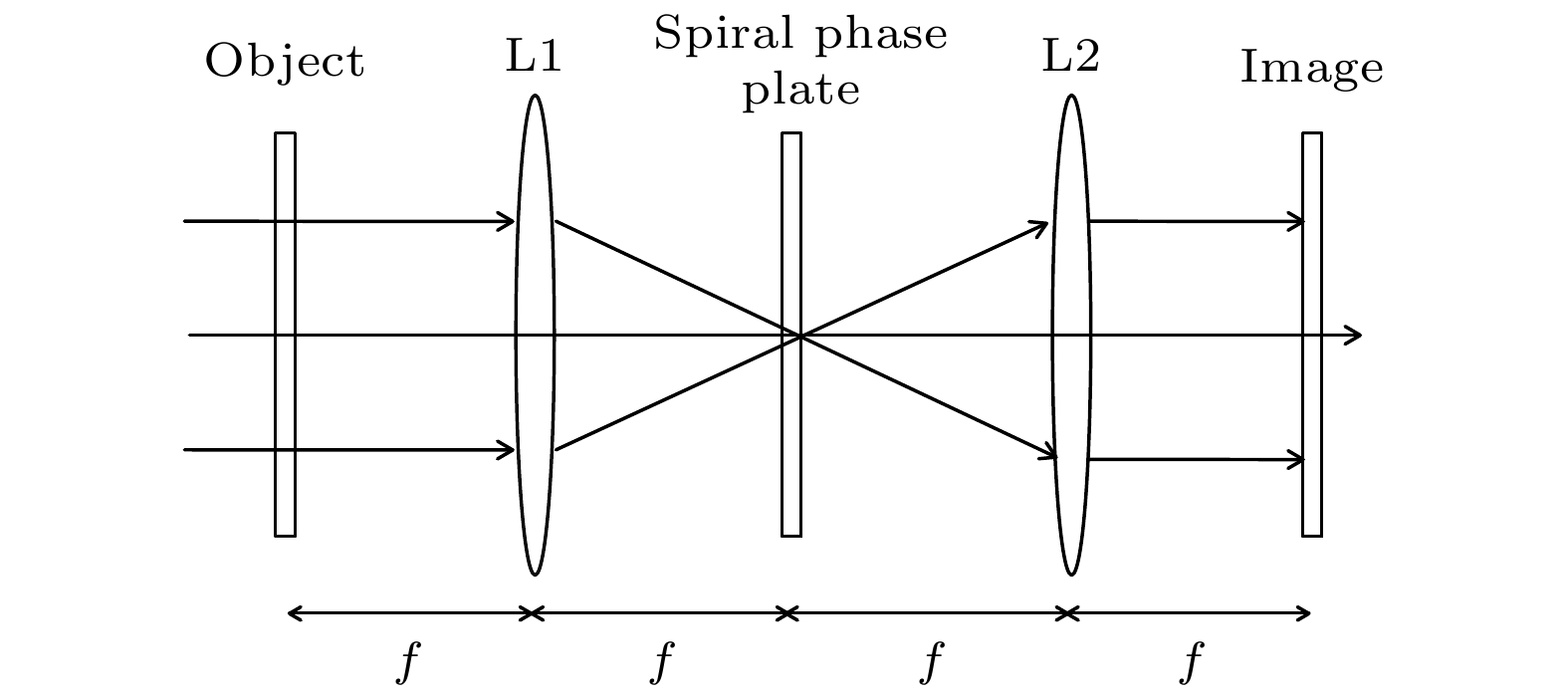
2021, 70 (15): 158702.
doi: 10.7498/aps.70.20201884
Abstract +
Quantitative phase imaging (QPI), which combines phase imaging with optical microscopy technology, provides a marker-free, fast, non-destructive, and high-resolution imaging method for observing transparent biological samples. It is widely used in life science, biomedicine, etc. As an emerging QPI technology, spiral phase contrast microscopy (SPCM) uses a spiral phase filter to achieve edge enhancement of amplitude or phase objects. Using the multi-step phase-shifting technology, a complex sample can be measured quantitatively, which has the advantages of high stability, high sensitivity and high precision. However, the SPCM requires at least three-step phase-shifted spiral phase filtered images to achieve the quantitative reconstruction of the amplitude and phase of a sample, and the image acquisition process and the reconstruction process are relatively complicated, which require high stability of system, and the SPCM has low temporal resolution. In order to further improve the performance of SPCM and increase the system stability, sensitivity and temporal resolution, in this paper a quantitative phase imaging method and system based on a fractional spiral phase plate is proposed. Through a sample intensity image filtered by a fractional spiral phase plate, the modified Gerchberg-Saxton iterative phase retrieval algorithm is used to quantitatively reconstruct the phase of a pure phase sample, which simplifies the experimental process and phase reconstruction steps of spiral phase contrast microsocopy. In the computer simulation experiments, the phase imaging process and the reconstruction process of spiral phase plates based on different topological charges are studied, the feasibility of which is analyzed. Finally, through imaging and phase reconstruction of the phase grating and biological cell sample, it is verified that the phase contrast microscopy method based on the fractional spiral phase plate can effectively improve the contrast of spiral phase contrast microscopy and can obtain a quantitative reconstruciton of a weak phase object. The phase information of a sample has significance in research and application for developing the spiral phase contrast microscopy.
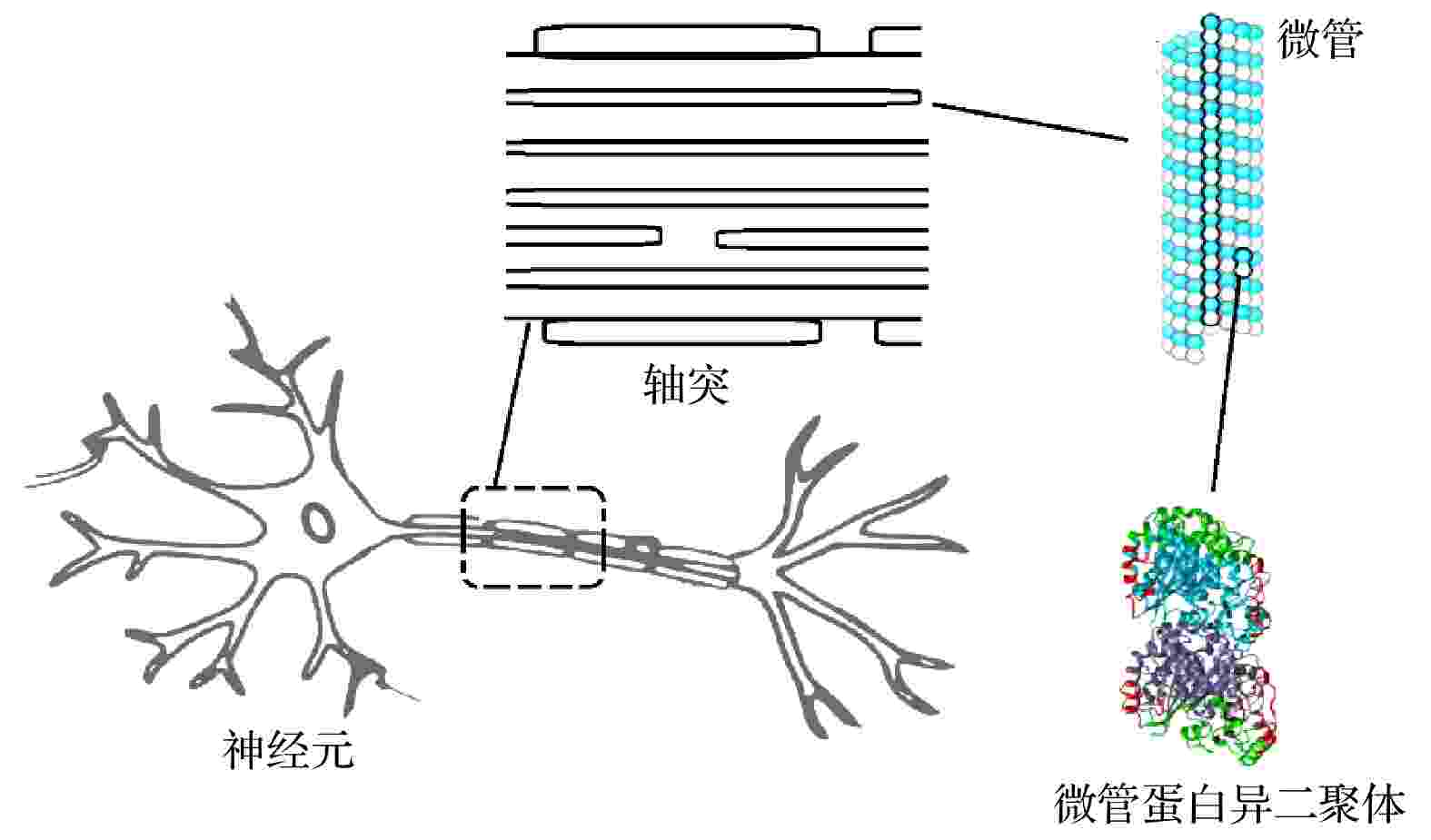
2021, 70 (15): 158703.
doi: 10.7498/aps.70.20210421
Abstract +
Neurons collect information from different parts of the biological body, generate signals and control their functions and activities. There are electromagnetic communication channels between neurons apart from the action potentials. Microtubules are the largest cytoskeletal filaments in neurons, with a diameter of about 25 nm. Microtubule is composed of alpha- and beta-tubulin subunits assembled into hollow cylindrical polymers supporting dynamical growth, and facilitate transport of proteins. In axons, dendrites, growth cones, and migratory neurons, microtubules are generally tightly organized in array and uniformly oriented. Because of the polarity and charge distribution of tubulins, the vibrations of microtubules generate electromagnetic fields. In this paper, electromagnetic fields induced by different vibrational modes of microtubules are studied. The vibrational mode of tubulins calculated using the normal mode analysis shows that there are abundant vibrational modes in the terahertz range. The electric fields of different vibration modes show distinct distribution features. The induced electromagnetic fields of microtubules can be stronger than thermal noise because of reduced permittivity of intracellular fluid for higher frequencies in a nanometric confined region. Since water exhibits layered structuring near all surfaces independent of their hydrophilicity, the permittivity of water surrounding tubulins between microtubules is expected to decrease significantly because of surface-induced alignment of water molecular dipoles. While the permittivity of surrounding medium decreases to 5, the electromagnetic potential energy between two 100-nm-long microtubules can be stronger than the thermal energy within a 30-nm-long distance. As high frequency vibrations are generally localized in the microtubule, terahertz electromagnetic interactions can be present between tubulins and short microtubules. Because the separation between microtubule arrays in neurons is in a range from 20 nm to 100 nm, electromagnetic interactions between microtubules can dominate the thermal motions, and affect the biological functions. Simulation results show that the electromagnetic potential energy increases over one order of magnitude when the vibration amplitude is changed from 0.1 nm to 0.4 nm. The results indicate that the electromagnetic interaction between microtubules is important for a better understanding of neural functions and communication. Terahertz stimulations can be used to detect and modulate the neural signals. The microtubule vibration generated magnetic field can be applied to disease diagnosis and brain-machine interface.

2021, 70 (15): 158704.
doi: 10.7498/aps.70.20210297
Abstract +
A fast and convenient method of recognizing the tongue tumor tissue based on bioelectrical impedance spectroscopy (BIS) is proposed. According to the difference among the electrical characteristics of tongue tissue under different pathological and physiological conditions, we can judge whether it is pathological. This method can help the surgeon in the clinical resection of tongue cancer not only to remove the tumor completely, but also to retain the patient’s tongue function as much as possible. In this paper, a model of human tongue squamous cell carcinoma (HSC3) xenografted in situ is established in mice. The electrical properties of the normal tissue, mixed tumor tissue and tumor tissue are studied by the BIS technology. The amplitude spectrum shows that none of the three tissues can be distinguished well in a low frequency range of 100–8.09 × 105 Hz due to the influence of contact impedance, but they can be distinguished according to their electrical characteristics in a high frequency range of 8.09 × 105–5 × 106 Hz. In the process of the experiment, first of all, the tip, middle and root of the normal tongue are detected, and the results show that the impedance values of these three parts are similar in the high frequency band, so the influence of different positions of tongue on the impedance value can be excluded. Then, the same three regions of the cancerous tongue are detected, and three electrical parameters, namely relaxation frequency frelax, real part spectrum ${{{Z}}'_{\rm{relax}}}$ and imaginary part spectrum ${{{Z}}''_{\rm{relax}}}$ of electrical impedance are extracted from the amplitude spectrum of high frequency band. The quantitative analyses of these three kinds of tissues show that the ${{{Z}}'_{\rm{relax}}}$ and ${{{Z}}''_{\rm{relax}}}$ of tumor tissue are the highest, and those of normal tissue are the lowest. Finally, the cancerous tissue coefficients α and β (the relative change percentage of the real part and imaginary part of the impedance value between the tested tissue and normal tissue) are determined according to these three electrical parameters for tumor tissue identification. The results show that when α ≤ 36.5% and β ≤ 31.2%, the tissue is normal; when α ≥ 36.5% and β ≥ 31.2%, the tissue may be mixed with tumor tissue; when α ≥ 82.7% and β ≥ 73.6%, the tissue is tumor tissue.

2021, 70 (15): 158801.
doi: 10.7498/aps.70.20210397
Abstract +
As an important perovskite solar cell (PSC) material, CsSnBr3 has been widely studied. Based on the density functional theory (DFT), the photoelectric properties of CsSnBr3 are studied by using the first-principles at different hydrostatic pressures. It is found that CsSnBr3 has an optimal optical band gap value of 1.34 eV under a pressure of 2.6 GPa, so only the photoelectric properties of CsSnBr3 under the hydrostatic pressure of 0 GPa and 2.6 GPa are studied, respectively. When the pressure is 2.6 GPa, CsSnBr3 has larger values of dielectric, conductivity, absorption coefficient and refractive index, the red-shifted absorption spectrum, and relatively small effective mass of electron and hole and exciton binding energy, indicating that CsSnBr3 is an efficient light absorbing material. According to the triple calculations of Born-Huang stability standard criterion, the tolerance factor T and phonon spectrum with or without virtual frequency, it is found that CsSnBr3 is stable under the pressure of 0 GPa and 2.6 GPa. According to the elastic modulus value of CsSnBr3 before and after pressure, it can be seen that the CsSnBr3 is soft, with good ductility and anisotropy. The Debye temperature and heat capacity of CsSnBr3, soon after it has been pressured, tend to be stable and are independent of temperature. The enthalpy and entropy increase with temperature increasing, and the increased amplitude is larger than those of the unpressured CsSnBr3. Gibbs free energy shows a decreasing trend, and the decrease is slightly faster when unpressured. This study shows that CsSnBr3 is a good photoelectric material after having been pressured hydrostatically, which is suitable for perovskite solar cells.

























